2025
From the Studio at Hill End Art Gallery, Hill End
18 January – 13 April
From the Studio, showcasing the work from artists that live at Hill End. The artists of Hill End buttress the artistic energy of this village and this exhibition gives an insight to their individual practices.
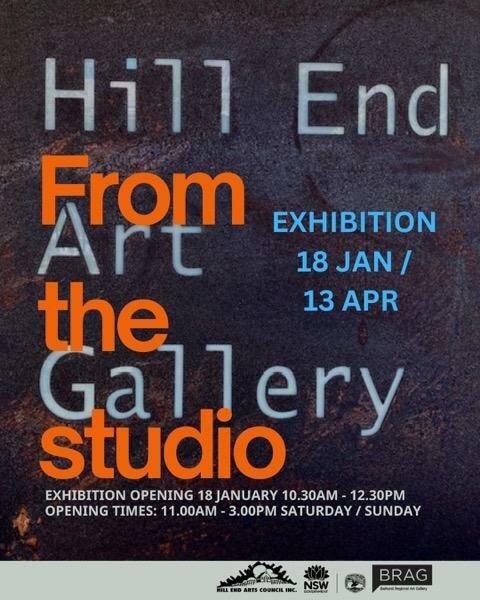
2024
Unveiling the Night at ARTEREAL Gallery, Sydney
18 October – 16 November
This October, I am delighted to be exhibiting a new body of work at Artereal Gallery, Sydney. Titled Unveiling the Night, the solo exhibition will showcase a series of photographic and video works, filmed in the landscape around my home in Hill End, NSW.
Unveiling the Night reveals the nocturnal wildlife that inhabit the landscape. As I sleep, these native and introduced species continue their routines, instincts, and behaviours, shaped by the need to survive. Their presence fascinates me, and I am drawn to understand their roles within this ecosystem—their impact both beneficial and detrimental.
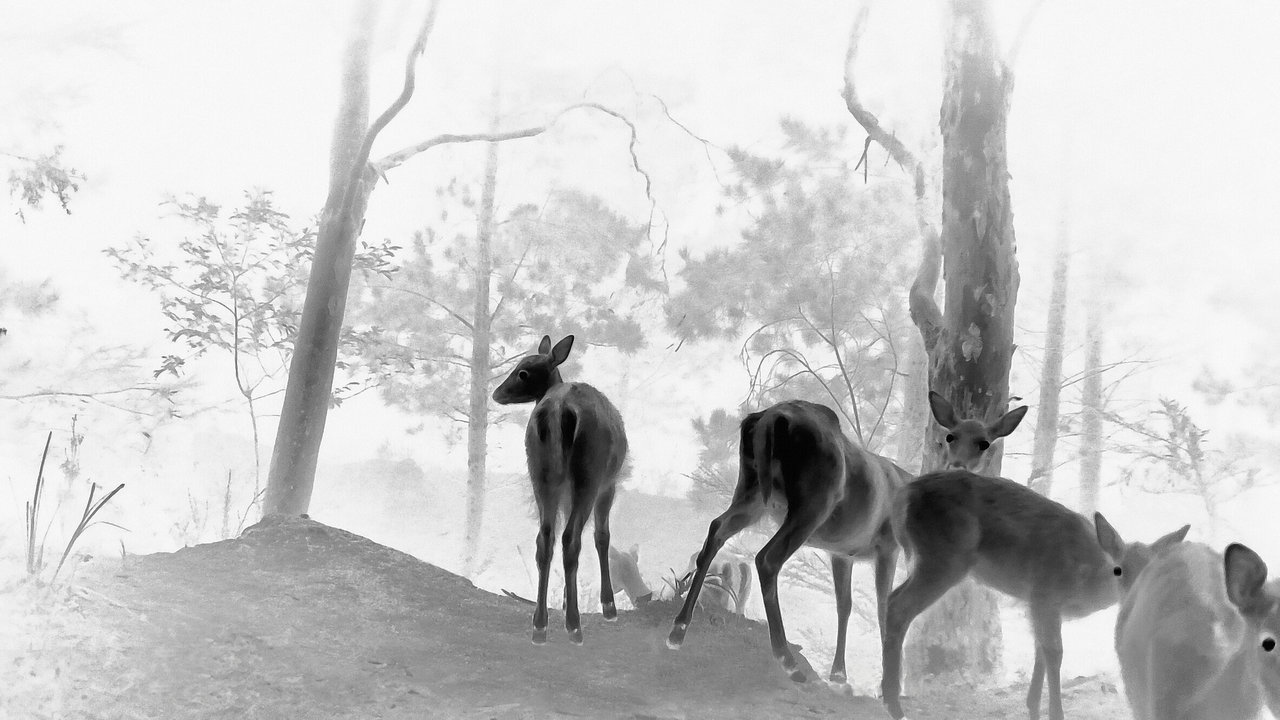
Image: Unveiling 1 – last quarter moon, 19°, 4th of March, 2024 giclée print on fine art paper 60×107cm Edition
—-
Unveiling the Night – exhibition essay by Rhianna Melhem, Curator
Nicole Welch’s latest body of work, set in the nocturnal landscapes of Hill End, captures the elusive magic that resides within the natural world at night. Using state-of-the-art infrared cameras, Welch offers a glimpse into the hidden lives of the bush’s inhabitants. However, these works are far from being mere documentation. Instead, they remind us that photography—often regarded as a medium of precision—can also embrace mystery, creativity, and illusion.
In works like Unveiling #2 – waxing crescent moon, 9°, 15th of April, 2024, Welch reconfigures time, layering the journeys of different animals whose paths crossed in the same patch of bush at various moments. In Welch’s depiction, however, their separate encounters become entangled, suggesting they might almost share the same space. Through this magical interweaving of time and space, Welch unveils the secret lives of the night—revealing a softer, more dreamlike side of the bush. This is not the harsh, sun-drenched landscape we often associate with the Australian wilderness, but a moonlit world steeped in quiet escapism, a refuge the artist herself sought as she acclimated to her new home in Hill End.
There’s an eerie, ghostly quality to these photographs, yet it is Welch who embodies the ghostly presence. She positions her cameras during the day but does not witness the night’s unfolding events firsthand. This absence imbues the series with a thematic tension between presence and invisibility, prompting viewers to consider who truly inhabits this nocturnal world—who is present, and who is not.
Welch’s images pay homage to the history of photography, alluding to the visual language of daguerreotypes and early black-and-white photography. However, her use of modern technology—typically reserved for surveillance—subverts expectations. Rather than emphasizing the stark, dangerous qualities we often associate with the night, Welch softens the imagery, transforming it into something gentle and mysterious. The result is a night-time world that invites rather than intimidates, brimming with subtle magic.
By blurring the lines between reality and illusion, Welch brings artistry back into photography. These works are not simply technical feats, but portals into a world teeming with life—a skulk of foxes, a herd of deer, a passel of possums. The Australian bush, animated by these creatures, is captured and magnified, offering viewers a renewed sense of wonder.
An undeniable influence on this series is the famed Holtermann Collection, a cache of late 19th-century glass plate negatives documenting Hill End during the Gold Rush. The echoes of this historical context, with its early experiments in photography, resonate throughout Welch’s work. Yet despite her fascination with the past, Welch’s training as a printmaker also informs her practice. This background allows her the freedom to bend the traditional rules of photography, infusing her images with a painterly quality. Welch’s photographs embrace texture and atmosphere, eschewing the obsession with sharpness and control often associated with the digital age. In her hands, photography becomes a medium of expressive potential, capable of blurring, softening, and amplifying the emotional resonance of each scene.
In certain works, particularly those in portrait orientation, there is a quiet nod to the tradition of Chinese landscape painting—an acknowledgment of the contributions of Chinese immigrants to the 19th-century Gold Fields of Hill End. Through these subtle gestures, Welch weaves together personal, historical, and artistic threads, creating a body of work that is as much about place and time as it is about beauty and mystery.
In this new series, Nicole Welch invites us to reconsider what we think we know about the night and the natural world, offering instead a vision that is tender, layered, and full of wonder.
Nicole Welch is currently working towards a major solo exhibition to be held at Orange Regional Gallery in mid 2025. This will be followed by a touring survey exhibition which will include works made between 2012 -2026, commencing at Bathurst Regional Art Gallery in 2026.
Artist Statement
Unveiling the Night reveals the nocturnal wildlife that inhabit the landscape of Hill End, NSW, where I live. As I sleep, these native and introduced species continue their routines, instincts, and behaviours, shaped by the need to survive. Their presence fascinates me, and I am drawn to understand their roles within this ecosystem—their impact both beneficial and detrimental.
Navigating the wilderness around Hill End, I see the landscape as a dynamic stage where each animal enacts a unique role. Through the lens of my camera, these creatures emerge as protagonists in a narrative of connection, resilience, and the delicate balance between humanity and nature. This journey serves as a metaphor for our evolving relationship with the environment.
Through documenting these animals, I emphasize the importance of coexistence and understanding between humans and wildlife. My hope is that the images evoke in viewers feelings of appreciation for the beauty and diversity of the natural world.
My presence in this work is articulated through the considered placement of cameras, representing a deliberately minimal intervention. Using night vision camera traps—technology often employed by both conservationists and hunters—I engage with the landscape and its fauna delicately, ensuring least disturbance. This process involves extensive periods of walking, observing, responding, and methodically curating footage to represent the essence of these animals’ natural behaviours. The dual use of this technology reflects a nuanced understanding of how humans interact with wildlife, whether for protection or pursuit.
Overall, this exploration—capturing wildlife and reflecting internally—echoes broader discourses of humanity’s relationship with nature and underscores the mutual reliance of all living beings. For me personally, living in Hill End has deepened this connection. The project marks a period of reflective, healing, self-discovery and transformation, paralleling the resilience observed in nature.”
I acknowledge the traditional custodians of the Wiradyuri country on which these artworks were made and recognise their continuing connection to land, waters and culture.
The creation of Unveiling the Night
has been generously supported by
Regional Arts Fund Project Grant
Arts OutWest
The CORRIDOR Project – Artist in Residence Program
NAVA National Association for the Visual Arts
Orange Regional Gallery
—-
Selected | Photography & Printmaking at the CBD Gallery, Sydney
1 February – 3 March
Selected | Photography & Printmaking delves into the practices of 22 contemporary artists exploring and thriving in the mediums of Printmaking and Photography, showcased across 52 images on display. Although printmaking and photography both originated from discrete technologies, such as armor engraving for etching and the camera obscura for photography, they can be seen to promote a common objective: the desire to replicate a vision of reality in multiples for commercial, political, or journalistic ends. While the objective of both disciplines is to leave a trace—be it figure, landscape, or still life—their usage in the art world has evolved until they were brought together in this exhibition.
—-
2023
WEST OF CENTRAL at Bathurst Regional Art Gallery
1 July – 27 August
Home to an increasing number of contemporary artists and creatives seeking connection, respite, and balance, regional Australia is a place where artists have space to create, experiment, respond, and challenge. This exhibition showcases the work of 17 regionally based artists who choose to make work on Wiradjuri Country in the Central Tablelands of NSW.
Of primary concern is the impact of man-made and climatic events on the ecologies and landscape of the region. A chaptered exhibition, recurring over multiple iterations, it celebrates artists who choose to live and work regionally, beyond an urban-centric ‘center,’ and in so doing, resituate the regional as a core tenet of their practice.
From the Blue Mountains to Mudgee, Bathurst to Hill End and their surrounds, WEST OF CENTRAL features artists including Aleshia Lonsdale, Anne Graham, Bill Moseley, Blak Douglas, Caitlin Graham, Georgina Pollard, Genevieve Carroll, Dan Kojta, Jason Wing, Joyce Hinterding and David Haines, June Golland, Karla Dickens, Leo Cremonese, Maddison Gibbs, Nicole Welch, and Vicky Browne.

—-
The Art of Analogue| Part 1
It was a generous and warm gesture (welcome to Hill End!) when artist, photographer, and generally cool person Bill Moseley invited me to talk about how I use an analogue process in unison with digital technologies.
A presentation on making wet-plate collodion images, aka ‘tintypes,’ in the historic town of Hill End. A town well known through the 1870s Holtermann collection of glass plate negatives. In it, Bill Moseley explains the process and its context within the world of Analogue. The video also features the work of Nicole Welch, and her comments on the significance of the analogue approach to art making.
Watch on YouTube
—-
Beating About The Bush at the Art Gallery of Ballarat
November 5, 2022 – 19 February, 2023
I’m honoured to have my work exhibited in Beating About The Bush at the Art Gallery of Ballarat, which puts works of the Australian Impressionism era alongside works by contemporary Australian women photographers. Themes such as gender, the hardship of life in the bush, immigration, urban growth, environmental concerns, and the presence of Indigenous peoples are explored through the work of some of Australia’s most exciting contemporary artists.
It includes paintings from the past alongside contemporary photography by Donna Bailey, Jane Burton, Peta Clancy, Maree Clarke, Nici Cumpston, Jessie Boylan, Tamara Dean, Anne Ferran, Jacky Redgate, and Nicole Welch.

—-
From the Studio, the Artists of Hill End
December to February 2023
A diverse range of artistic practices have flourished and continue to flourish in Hill End. I’m delighted to have an artwork in the group exhibition From the Studio, the Artists of Hill End, a window into the current artists residing in Hill End and their work.

—-
2022
Embracing Bathurst’s Many Identities: A Stunning Collaboration Unveiled
In a recent review by Suzie Gibson for The Conversation, the unveiling of Wiradyuri Ngayirr Ngurambang – Sacred Country at Bathurst’s Mountain Tales event has captured the hearts and minds of attendees. The collaborative effort between Aunty Leanna/Wirribee, Nicole Welch, and Kate Smith has produced a breathtaking film showcased at Tremain’s Mill.
Read Review
—-
Immersive Art Experience at Bathurst Winter Festival
July 2022 marks the debut of an immersive moving image work titled Wiradyuri Ngayirr Ngurambang – Sacred Country at the Tremains Mill Bathurst. An immersive moving image work exploring Wiradyuri Ngurambang Ngayirr. Wiradyuri Elder Wirribee shares part of the narrative of Custodianship of Country, collaboratively working with local Artist Nicole Welch’s work that is linked to care-taking the environment. This work explores shared understandings between First Nation and Non-First Nation women. Connecting to the landscape from Tarana along the Wambuul/Macquarie River to Wahluu/Mt. Panorama offering a space for contemplation toward a healing of people, community, place, and shared stories.
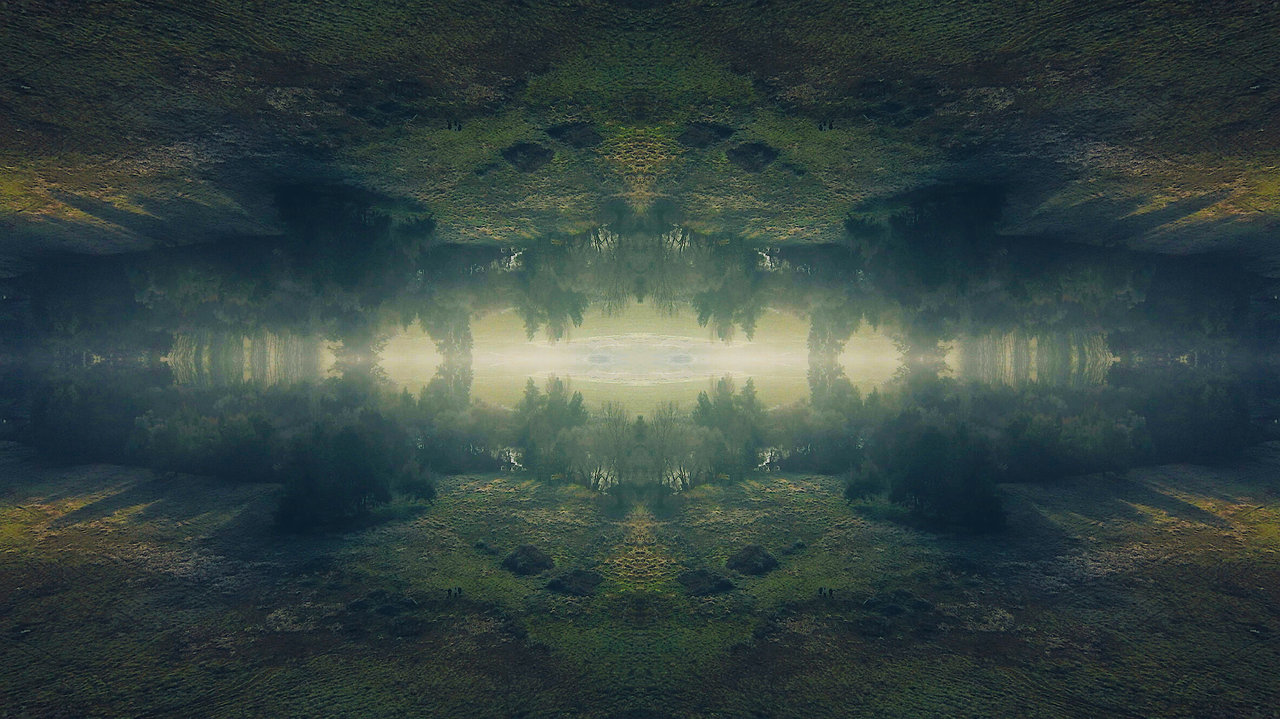
—-
’Yarrahapinni Screening at South Australian Museum
On February 18, 2022, Nicole Welch’s acclaimed work Yarrahapinni graced the screens of the South Australian Museum’s Night Lab BEDTIME STORIES during the 2022 Adelaide Fringe. This screening offered audiences a mesmerising journey into Welch’s artistic landscape, showcasing her mastery of the moving image medium.
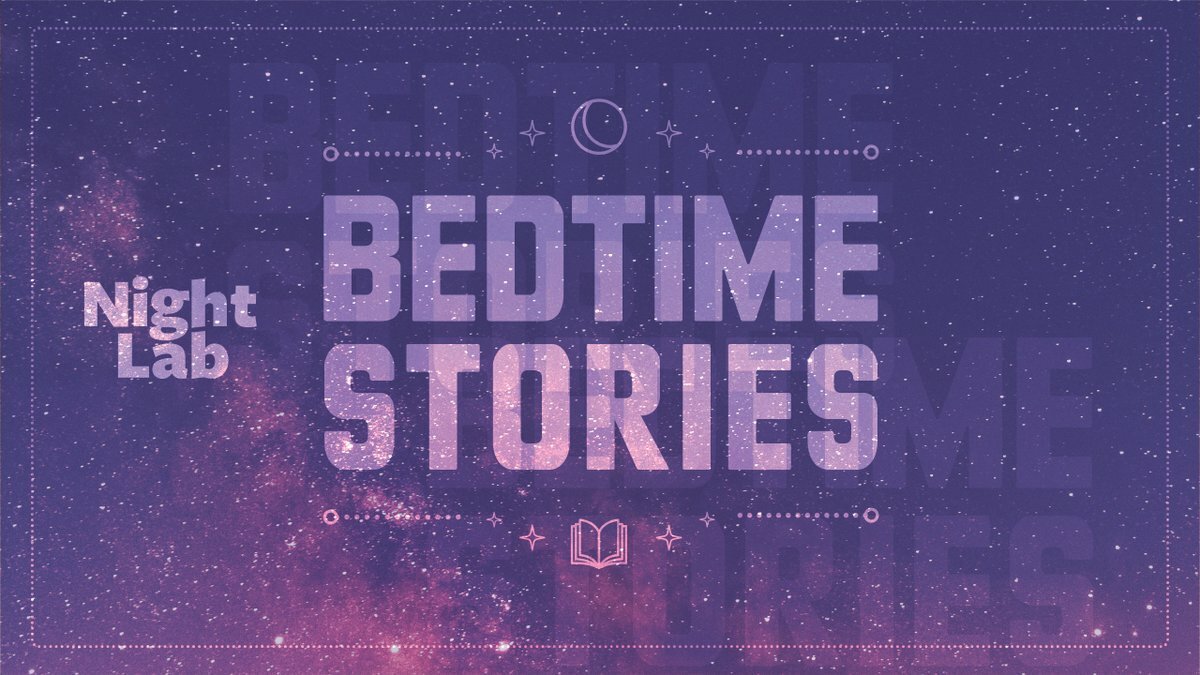
—-
2021
Artereal Gallery Hosts Interruptions and Illuminations
From April 23 to May 14, 2021, Artereal Gallery proudly presented Interruptions and Illuminations, Nicole Welch’s first online exhibition with the gallery. This captivating showcase offered viewers a glimpse into Welch’s artistic evolution over the past decade, encapsulating the essence of her practice through select artworks.
Explore the Exhibition
—-
Insightful Feature on Time-lapse Art by Agora Digital London
Agora Digital London recently featured Nicole Welch’s exploration of time-lapse film, landscape, and body art. Elizabeth Harris and Kiran Sajan provided valuable insights into Welch’s ongoing artistic journey, expanding awareness of women in digital art through profiles, stories, virtual residencies, and talks.
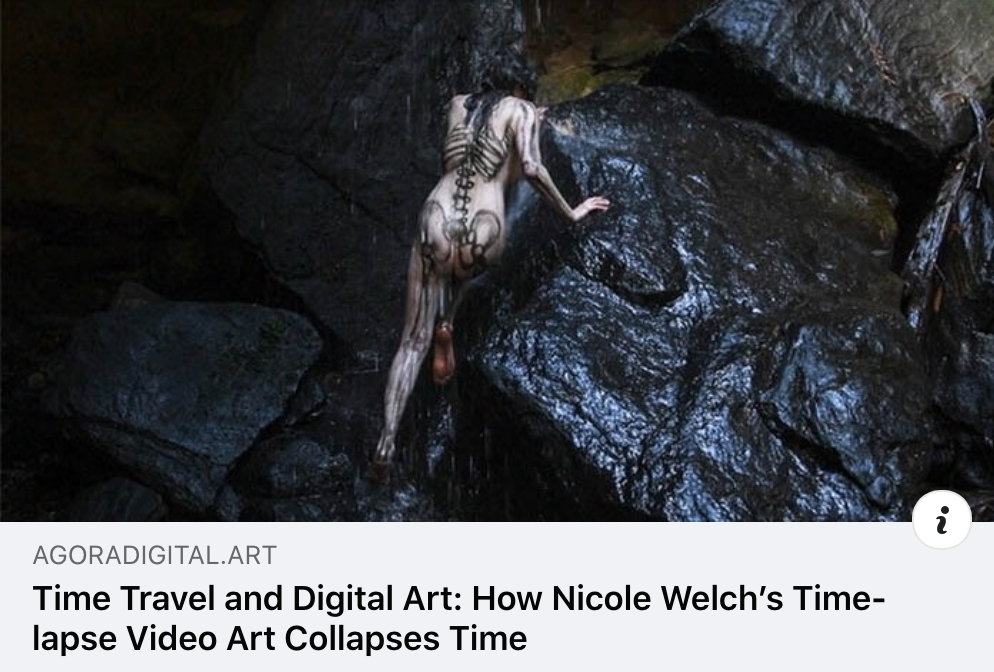
—-
Generous Support for ‘AS ABOVE SO BELOW’ Project
Nicole Welch expresses her gratitude for the generous support received through the Regional Arts Fund – Regional Arts NSW for her future project AS ABOVE SO BELOW. This initiative aims to reconnect with the natural world amidst the ongoing isolation imposed by COVID-19, exploring new techniques in photography and moving image to create installations and performances across sites in regional NSW.

—-
2020
The CORRIDOR Project Artist Residency 2020 (November)
Just home from a special kind of isolation at the CORRIDOR Project at Darby Falls near Cowra NSW undertaking an artist residency.
The CORRIDOR project is a multidisciplinary arts organisation located in regional NSW Australia. The 2020-2021 Arts and Science program links arts & culture and science, through residencies; events and workshops.
I am extremely grateful to the CORRIDOR project manager Phoebe and Dylan Cowdery, the Orange Regional Gallery and the various funding bodies that have supported the residency program for 2020.
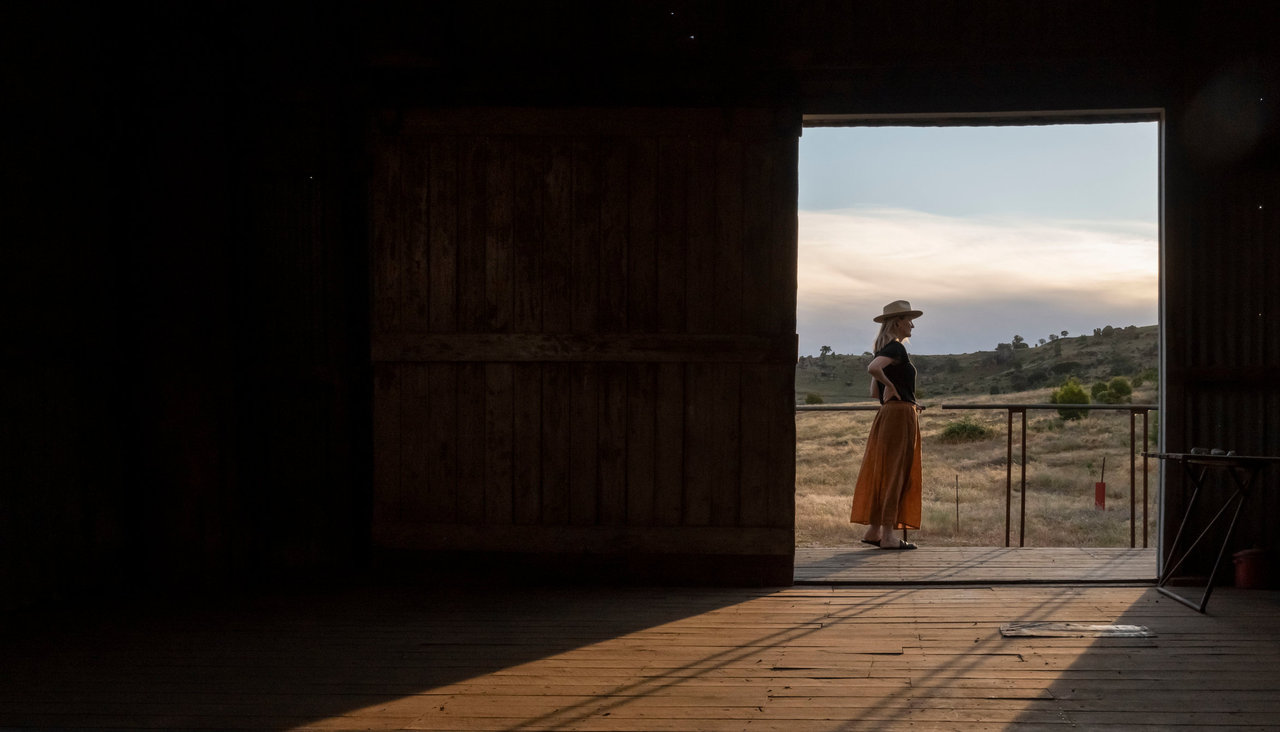
—-
SYDNEY CONTEMPORARY PRESENTS 2020 MAY SPACE
I’m grateful to be presenting my moving image work Yarrahapinni at Sydney Contemporary’s first online fair with MAY SPACE - alongside the wonderful Todd Fuller, Mylyn Nguyen, Catherine O’Donnell, Janet Tavener and Loribelle Spirovski.
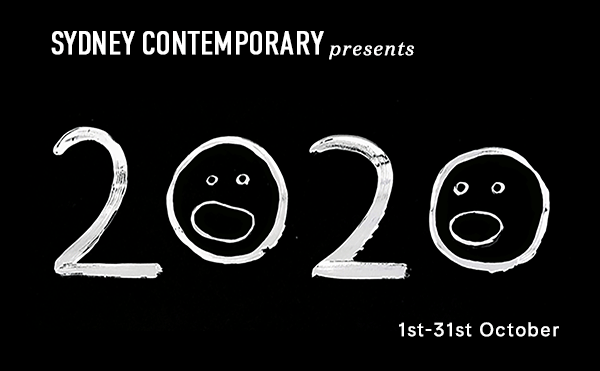
!!
Yarrahapinni (preview) 2019
single channel HD infrared time lapse – 3:21mins
50 inch screen, gilded frame edition of 3
—-
Exciting News from The CORRIDOR Artist-in-Residency Program (May)
I am thrilled to share the incredible experience of my preliminary artist residency at the CORRIDOR PROJECT in the Central West of New South Wales as part of the CORRIDOR artist-in-residency program 2020. Spending my last morning here in blissful isolation, I am deeply inspired by the dramatic transformation of the landscape and nature’s resilience – everything is so green after such a long dry spell. This residency has been invaluable, allowing me to explore new media, techniques, and ideas for a new body of work to be exhibited at the Orange Regional Gallery. It has been a much-needed break from home isolation and has set many creative projects in motion.
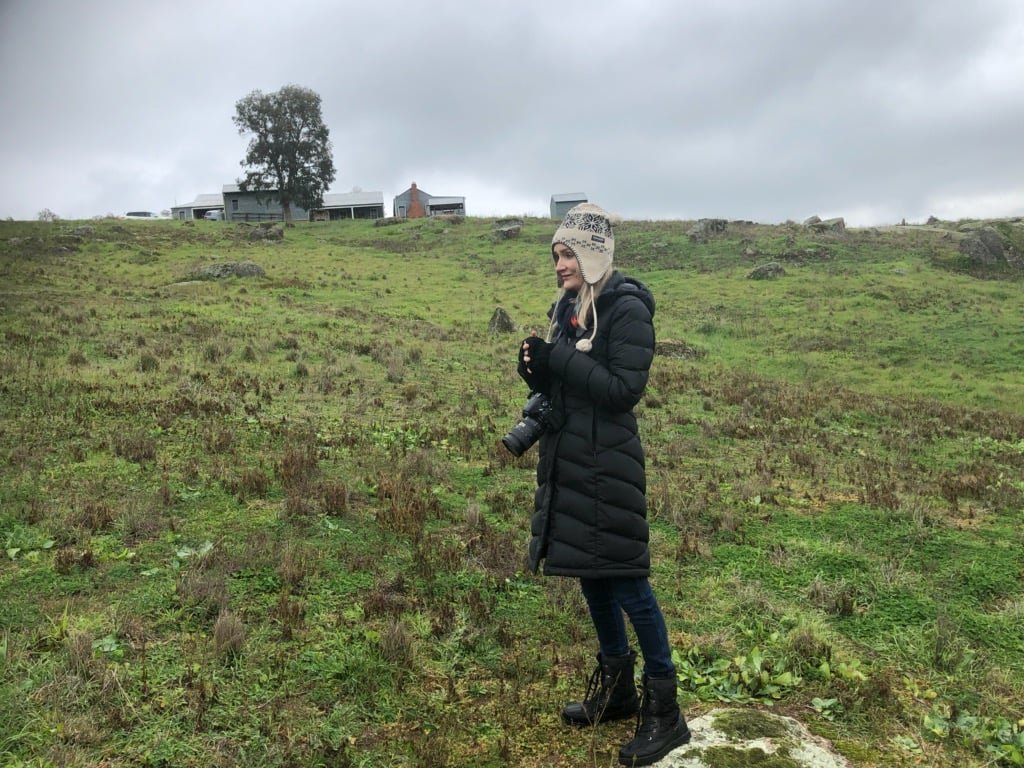
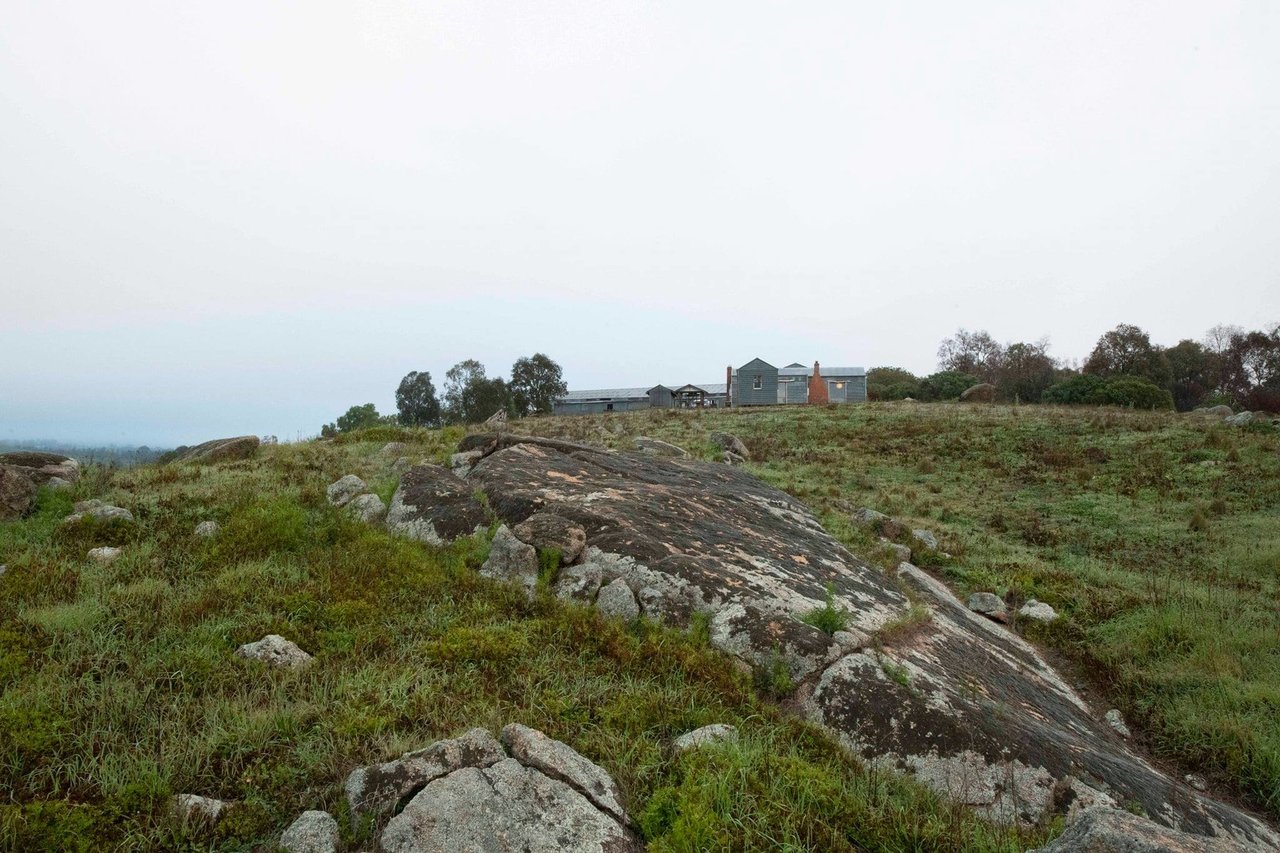
—-
Kangaroo Valley Art Prize
I am excited to announce that my moving image work, Yarrahapinni, has been selected as a finalist in the Kangaroo Valley Art Prize.
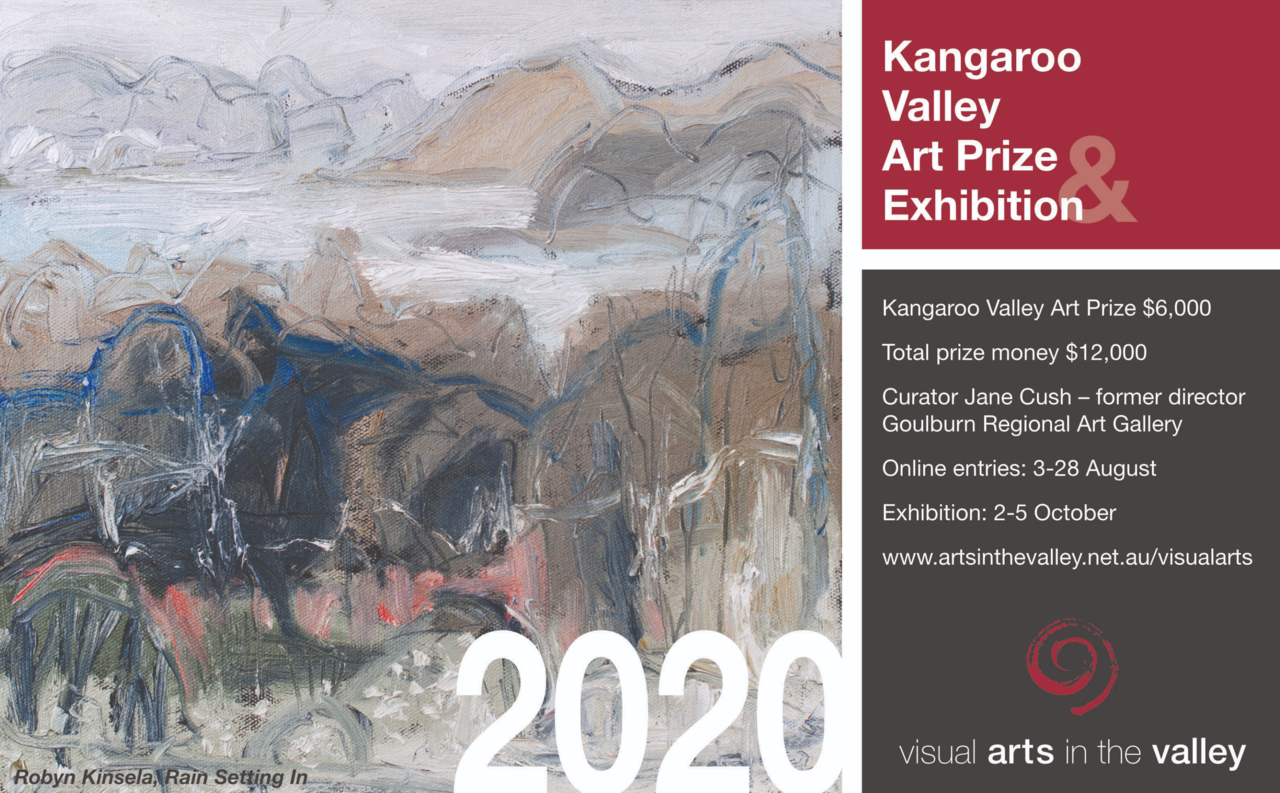
—-
ArtsHub Review by Gina Fairley
Manly Dam Project at Manly Art Gallery (NSW)
Gina Fairley from ArtsHub has reviewed the Manly Dam Project at Manly Art Gallery. This thought-provoking exhibition explores the intersection of art and nature, offering a unique perspective on the local environment. You can read the full review here).
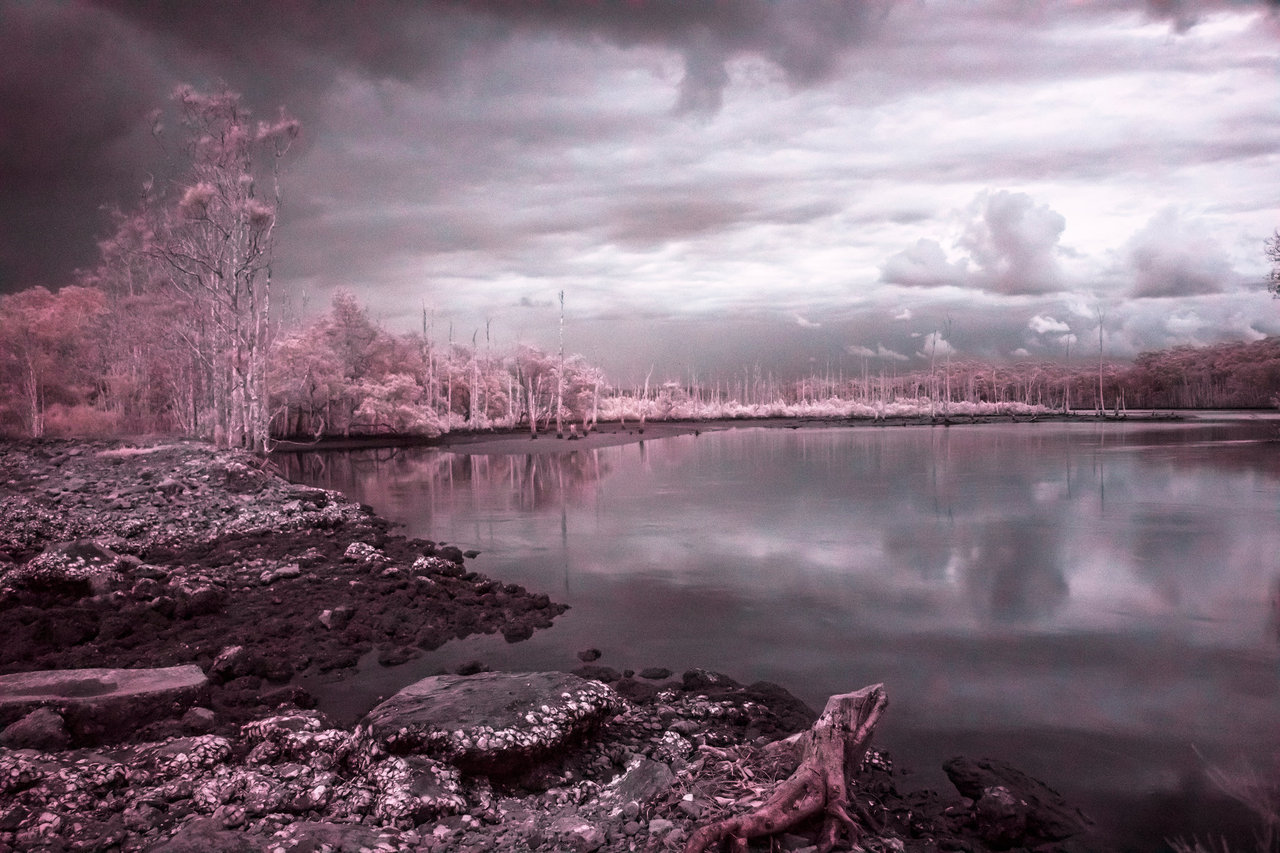
—-
Listening to the Anthropocene
Yarrahapinni has been selected/peer reviewed for the 2020, Charles Sturt University Creative Practice Circle symposium and exhibition entitled Listening in the Anthropocene: Creative practice and multimedia artsmaking in response to a human influenced world.
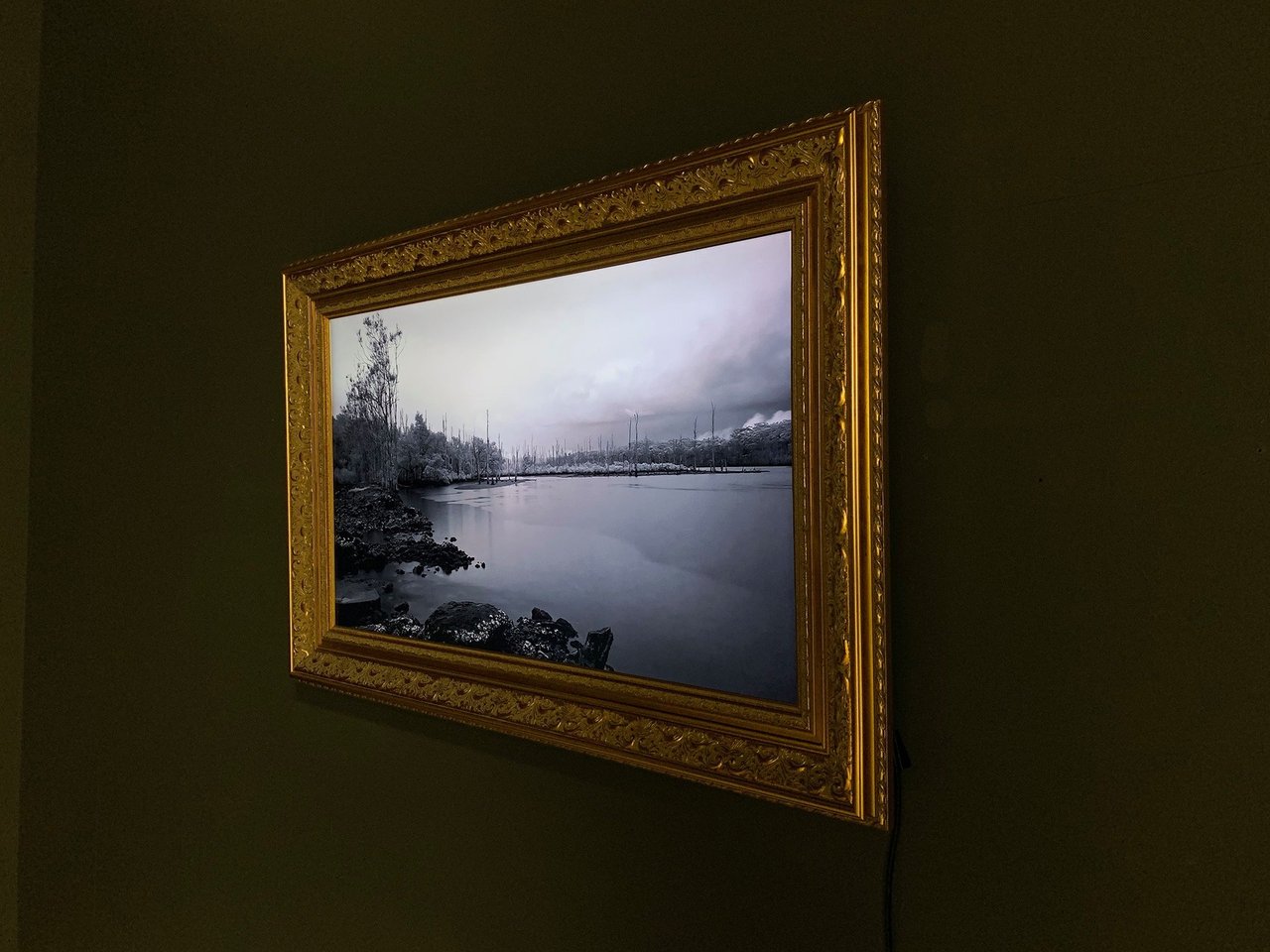
—-
2019
Manly Dam Project

—-
Altered States – Tamara Dean & Nicole Welch

—-
Naked & Nude Art Prize
TRANSFORMATION selected as a finalist in the Naked & Nude Art Prize at the Manning Regional Art Gallery.
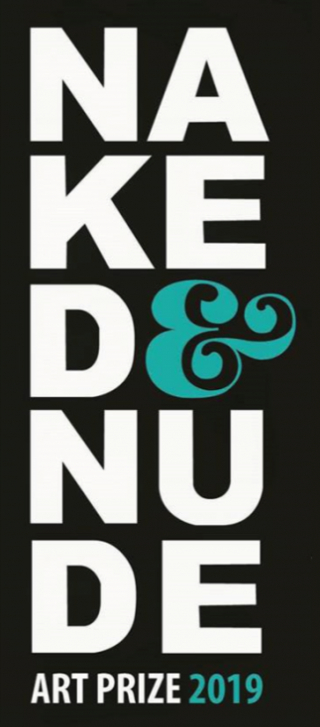
—-
Sydney Contemporary Art Fair 2019
New work ‘W I L D #1 – prelude’ exhibited at the MAY SPACE booth, G09
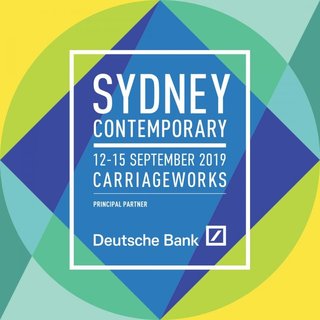
—-
Stillness & Motion – Nicole Welch – Adelaide Perry Gallery
Select photographic works and film from the past 5 years.
2 – 24 May 2019
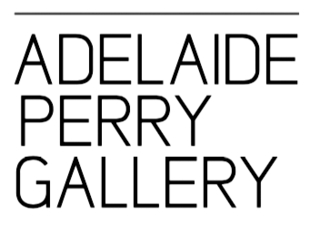
—-
Nicole Welch By Artist Profile


https://www.artistprofile.com.au/nicole-welch/
—-
2018
Making it as a regional artist – the realities and the wins
ArtsHub visual arts editor Gina Fairley’s feature editorial on Nicole Welch for ArtState Bathurst

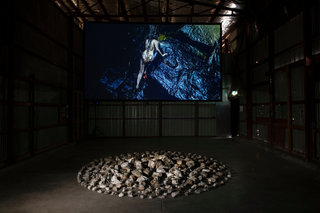
Transformation – arrival, installed at Tremains Mill for ArtState Bathurst 2018
Read here
—-
5th International Motion Festival, Cyprus
The time-lapse film Wildēornes Body has been selected for the 5th International Motion Festival, Cyprus. It will feature in the Single Channel Show (Video Art presented with single channel works. Experiments pushing the limits of the moving image)
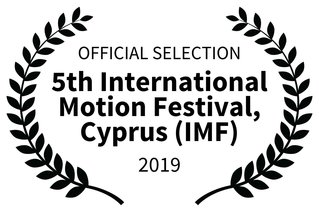
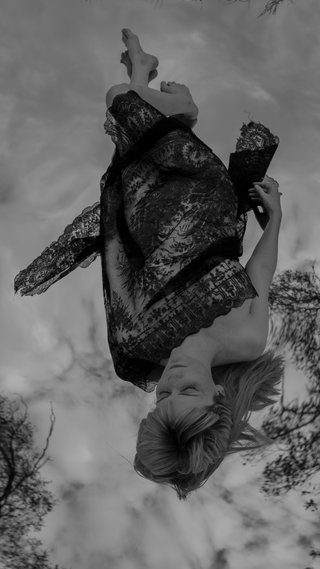
Wildēornes Body (still) 2017
—-
Nicole Welch – Black Box Projects 2018
To coincide with Nicole Welch’s presentation of the moving image work Transformation and photographic series Mementos at Artstate Bathurst (1 to 4 November 2018), as well as her solo exhibition Silence & Solitude: select works from Eastern Interiors at Glasshouse Regional Gallery (12 October to 2 December 2018), MAY SPACE is presenting a selection of Welch’s video artworks in Black Box Projects.
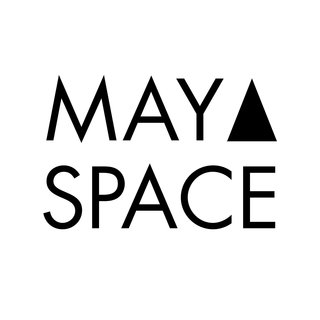

Transformation: the prelude (preview)
—-
TRANSFORMATION unveiled at ArtState Bathurst 2018
Nicole Welch’s most ambitious project to date was a featured part of Artstate Bathurst 2018. The two-channel video work sees a female figure carefully moving through the landscape.

Transformation – journey, installed at Tremains Mill for ArtState Bathurst, 2018
—-
MEMENTOS ArtState Bathurst 2018
Nicole Welch was chosen to create a small gift for the delegates that attended Artstate Bathurst 2018. The resulting series of infrared photographs were packaged up in miniature for the guests. Full-scale versions are now available from MAY SPACE.

Mementos #3 – Macquarie River 2018
—-
ArtsHub Review by Helen Wyatt
Review: Jason Wing and Nicole Welch, 4.5 stars, Glasshouse Regional Gallery
Silence & Solitude: select works from Eastern Interiors
GlassHouse Regional Gallery, Port Macquarie
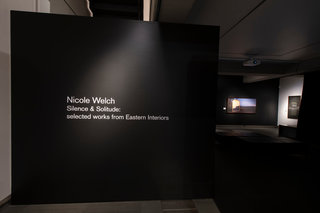
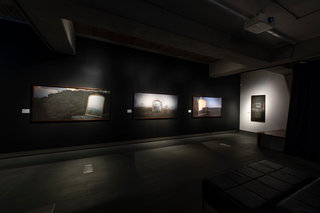
Silence & Solitude exhibition at GlassHouse Regional Gallery

Read Review
—-
Media artist Nicole Welch explores the colonial history of the Blue Mountains in exhibition at The Glasshouse
Port Macquarie News

Nicole Welch at the GlassHouse Regional Gallery 2018
—-
Transformed by Place: Q&A with Artstate Artist Nicole Welch
An interview with Nicole Welch about TRANSFORMATION and MEMENTOS commissioned for ArtState NSW 2018
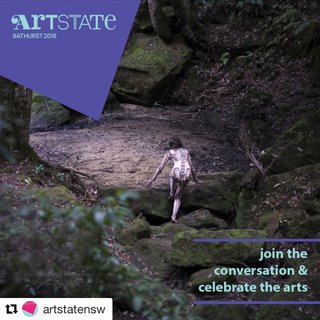
Read here
—-
Finalist Grace Cossington Smith Art Prize 2018
Three photographs from the Wildēornes Land series have been selected for the Grace Cossington Smith Art Prize 2018

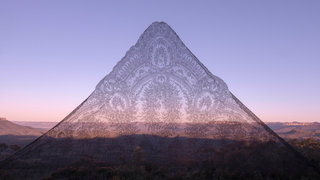
Wildēornes Land #1 – Capertee Valley 2017

Wildēornes Land #3 – Grose Valley 2017
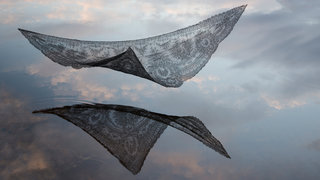
Wildēornes Land #7 – Wollemi 2017!
—-
ArtState Bathurst 2018
Nicole Welch is producing two new works TRANSFORMATION and MEMENTOS for ArtState Bathurst NSW Regional Arts Conference, Create NSW, 2018
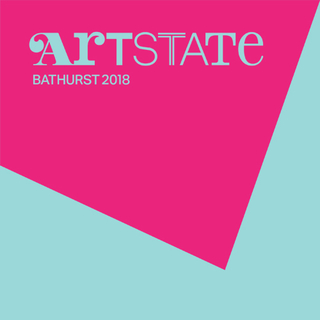
—-
Transformation: the prelude screened at Sydney Contemporary Art Fair 2018
Nicole Welchs latest moving image work Transformation : the prelude was unvieled at the Sydney Contemporary Art Fair 2018. Constructed from 1000 photographs of a waterfall captured using infrared technology, the resulting hyperreal light spectrum and colours revealed are invisible to the human eye, symbolically referencing the notion of the unobserved

Transformation: the prelude (preview)
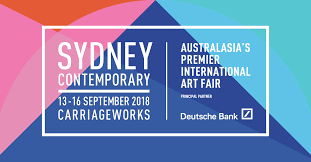
—-
2017 + PRIOR
WILDĒORNES LAND 2017
Wildēornes Land
by Dr. Ann Finegan
Co-Director Cementa Contemporary Arts Festival
Interrogations of European notions of the sublime in nature, colonialist mastery and ecology subtend the cinematic imaginary of Nicole Welch. In Wildēornes Land she subverts another Eurocentric concept brought to Australian shores: the wilderness of European folklore. Steeped in the dark lore of the forest – its haunted zones, domains of witches, its dens of wolves and shapeshifters – European folktales persist in many of the stories handed down. The Brothers Grimm, Hansel and Gretel, Sleeping Beauty, Little Red Riding Hood. When the European colonists arrived in Australia they also brought with them this dark imagery. Deep in the European psyche, bad things happen to people in the woods. The wilderness is therefore the place that you don’t go – certainly not unarmed or lacking talismans. It is a place of extreme vulnerability. Even for Indigenous Australians there are places of bad spirits, places that command ceremonies of appeasement. Unless, of course, you are on a peak, looking down, surveying the vastness of the scary place from the other side of a magical divide.
The importance of the vantage point cannot be underestimated. Without it, the vast and daunting scale of the ‘Wildēornes’ cannot be enjoyed through the European colonialist lens. The vantage point, drawing its line of demarcation between known and unknown, savage and civilized, safe and unsafe, underlies the lesson of the sublime in nature: terrifying chasms and dangers tamed through the imaginary possession of the view from on high, from that point of Kantian safety. In Wildēornes Land something has shifted. Nature is no longer secure. With climate change the big scary wilderness has lost its power. Welch, naked, in an antique mourning shawl, stands on a sublime Blue Mountains abyss. She occupies the same position as Caspar David Friedrich’s confident wanderer, immaculate in his 18th century gentleman’s suit, surveying a mighty realm. Welch, by contrast, in mourning garb, offers herself, naked and sacrificial, to a world on the brink of being lost. The symbolism of Welch’s composition asks us to imagine the unimaginable: an ecological crisis that dwarfs the wilderness that was, once, for Europeans, our deepest repository of fear. Across images of clouds and sky, at cinematic scale, that same delicate black mourning shawl suspends itself, its pall a symbol of human making heralding death. It epitomises the Victorian era as the departure point from which the industrial revolution and the burning of fossil fuels accelerated. Like the gaseous changes taking place in the atmosphere there’s a gossamer lightness to it.
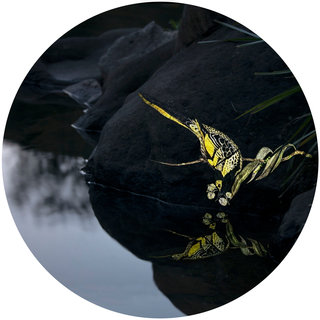
Tondo #4, Projection – Regent Honeyeater from ‘The Birds of Australia: in seven volumes’, John Gould, 1848, 2016
In the tondi, exquisitely framing the landscape through the circular aperture of an 18th century aesthetic, something is clearly wrong. The sky dominates. It’s as if there’s been an accident, someone has bumped the camera, skewing the subject. Instead of rare birds holding the focus in Tondo #4, Projection – Regent Honeyeater (2016), or the view from the lookout garnering attention, Tondo #3, Kanangra Wall Lookout (2014), the sky intrudes at odd angles, somehow menacing. Where the wilderness once dominated, lurking in the psyche, the carbon-saturated atmosphere has become the new sublime of danger.
Artlink Review
Nicole Welch: Wildēornes Land
Blue Mountains Cultural Centre
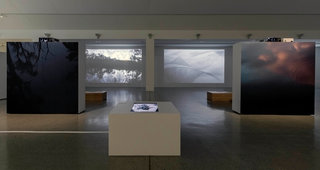
Wildēornes Land installed at the Blue Mountains Cultural Centre City Gallery 2017
LINK
https://www.artlink.com.au/articles/4590/nicole-welch-wildC493ornes-land/
EASTERN INTERIORS: EXPLORATIONS FROM BATHURST TO ALBURY 2015
Forward Reflections
by Olivia Welch (not related to the artist)
Notions of ‘beauty’ and ‘sublimity’ are conjured when encountering the photographic and video work of Nicole Welch. Though it could be instinctive in the twenty-first century to consign the exceptional picturesque appeal of these works to a mastery of digital manipulation, Welch does not depend on such techniques. Instead, the artist traverses through areas of bushland, locating incredible landscapes to create compositions using large-scale projectors, generators, spotlights and research-inspired objects. These works have seen Welch interrupt the rugged terrain with illuminating beams of light, projections of images and a chandelier that is seemingly floating in the landscape, despite actually being hoisted into the scene using a crane. In the suite of images that formulate Eastern Interiors: explorations from Bathurst to Albury new iconography emerges with the inclusion of an antique mirror and the use of text.
There is an archival foundation to Welch’s hybrid imagery. The landscapes within her photographs do not simply exist as visually attractive images, but engage with the history of ‘landscape’ as a creative genre, whilst also integrating interpretations of the land from literature, exploration records and other resources. Her series Illumination featured a luminescent Victorian-style chandelier, taking cues from archival research into the historic Holtermann Collection; a series of photographs made by Beaufoy Merlin and Charles Bayliss in 1872. Welch’s 2014 body of work Apparitions featured circular details of paintings from the Romantic period, found in the collections of the National Gallery of Australia and the Art Gallery of New South Wales, projected onto waterside cliffs and foggy forest scenery. Eastern Interiors: explorations from Bathurst to Albury references Explorer Thomas Mitchell’s journals originally published in 1838 under the title ‘Three expeditions into the interior of Eastern Australia’, a first edition of which can be found in the collection of the State Library of New South Wales. Mitchell was the Surveyor General of New South Wales and his role was to manage and administer Crown Land; defining boundaries, locating places for new settlements and planning routes for transportation. This job entailed lengthy expeditions across the country, often requiring the assistance of Indigenous guides. Through these journeys, land was divided and defined by the colonial settlers in ways that suited their Eurocentric needs and opinions. These decisions and descriptions shape our knowledge, understanding and perception of the land today, a theme that Welch aptly draws attention to.
Comparably to Mitchell, Welch embarked on a cross-state expedition in order to (re)discover the locations within her latest series of work. Informing the suite is a residency the artist completed in September of 2014 at Hill End near Bathurst, as well as time spent in and around Albury in the State’s south. The video work that completes this series, titled ‘East West’, references the travelling nature of Welch’s research, as well as the explorers she quotes. It features a mirror reflecting the sky as it transitions from day to night, communicating the role of the sky as a global and perpetual navigational device.
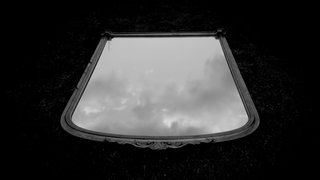
East West (still) time-lapse film 2015
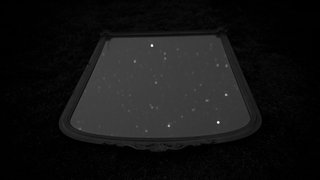
East West (still) time-lapse film 2015
Welch is originally from Bathurst and is currently based there, making her connection both personal and physical. A group of works in Eastern Interiors: explorations from Bathurst to Albury is titled ‘Frightful Tremendous Pass’. The group takes its name from a 200-year-old quote within Governor Macquarie’s journals that was written while he was travelling to proclaim Bathurst as a settlement of the colony. As the Governor’s journal reads, “At 11 o’clock, (we) reached the termination of the Blue Mountains… to view this frightful tremendous Pass.” In the context of these diaries that also describe one area as “very bad” for cattle and carriages, and the soil quality of Bathurst as “…fit for every purpose of Cultivation and Pasture…”, it is easy to see how these descriptions of the Australian terrain are based upon what was seen as useful and/or beautiful to European needs and preferences.
In the second and third work of the ‘Frightful Tremendous Pass’ set, Welch plays with Governor Mitchell’s accounts. The artist ironically projects Mitchell’s idea of tremendousness and frightfulness via literal projections. The word “Tremendous” is cast onto a plateau girt by water at the edge of the Blue Mountains, and the word “Frightful” is contained within a nocturnal scene, illuminated over a bed of ferns surrounded by tall native trees. These observations powerfully punctuate their respective landscapes, causing associations between the meanings of these words and Welch’s carefully orchestrated environments to merge- revealing the impressionability of such emotive language. Similarly, the set of works titled ‘Silence and Solitude’ is influenced by Governor Macquarie’s following musing: “…the silence and solitude, which reign in a space of such extent and beauty as seems designed by nature for the occupancy and comfort of man, create a degree of melancholy in the mind…” In one of the works, Welch has projected the word “Solitude” onto a misty landscape. This work remains the most sinister image of the suite, ghostly in its effect. With all of these photographs, Welch cleverly embodies both hostile and inviting environments with historical descriptions that label the conditions in which the colonial settlers encountered them.
Taking their titles from words within William Hovel’s journal, which relays his explorations to find new grazing land with Hamilton Hume in 1824, are Welch’s works given the common title ‘Magnificent Prospect’. Describing an impressionable sight of the Snowy Mountains near Albury, Hovell writes, “At the end of seven miles a prospect came in view the most magnificent.” Featuring a mirror reflecting the landscape opposite the scene in which it is situated, these photographs project magnificence in their striking appearance. This set includes an eerie fog-filled scene where the trees seemingly dissolve into an encroaching distance, as well as a brilliant blue sky striped with fluorescent sun-soaked clouds that are disrupted by the reflection of pastel pink heavens glowing behind a rocky cliff. These captivating environments are wondrous, yet diverse, evoking the idea of endless possibilities for Hovell’s new “prospect”, a label that also coveys a sense of adventure and discovery designated to a land not yet captured or claimed.
Though it is easy to relegate notions of Australia being an unclaimed wilderness to an archaic imperialist past, Welch reveals how the consequences of this ideology have seeped into contemporary society’s relationship with the Australian landscape. The artist references a quote from theorist W. J. T. Mitchell’s essay ‘Imperial Landscape’, which reads, “Like all things in a rearview mirror, these landscapes may be closer to us than they appear.” Welch’s works containing mirrors draw from this quote by literally placing a mirror in the landscape. In each work, the reflection is contained within an antique frame that acts like a portal into the past. Through this, Welch exposes the contemporary desire to view the Australian terrain via a nostalgic lens, which romanticises the landscape as an undiscovered place of mystical beauty and inhospitable depths. However, this romantic mythology is ruptured, as the mirror lies within the landscape it reflects, showing that both the evocative view in the frame, and the perceptibly present-day terrain surrounding it, coexist.
Throughout Eastern Interiors: explorations from Bathurst to Albury, the past and present are conflated in singular images and filmic scenes. With this, Welch subtly offers a thoughtful examination on how contemporary perceptions of the natural Australian landscape continue to be shaped and informed by enduring historical ideologies.
APPARITIONS 2014
ILLUMINATION 2012

Anachronism, Romanticism and the Australian Landscape Today: Nicole Welch’s Illuminations (2012)
by Veronica Tello

Terra Australis Incognita from the Self series, Hill End 2010

Deliverance from the Self series, Hill End 2010
The European, colonial, representation of the Australian landscape, which is the subject of Nicole Welch’s recent work, first appears in the journals and sketches of the officers of the First Fleet. These eighteenth century colonialists drew upon the language and aesthetic tropes of the arcadian tradition to describe and detail the new world. Through the eyes of British colonialists, Australia was always seen in terms of its potential for colonisation, for building an arcadia. The European arcadian tradition would continue to define our perception of the Australian landscape throughout the 19th and 20th centuries. The British émigré John Glover and the German émigré Hans Heysen, amongst other artists including the Heidelberg School, worked to emphasise the fertile and arcadian Australian pastures, which shone under the brilliant Australian sun and its blue skies. In Bathurst, and the regions of the Blue Mountains, Hill End and Sofala, which are the focus of the landscapes in Welch’s recent work, John Lewin similarly sought to articulate the pastoral potential of this land. Since the arrival of the First Fleet, the pastoral tradition has dominated our conception of the Australian landscape. But as Welch seems to suggest, there is a distinct, somewhat neglected, European conception of the Australian land to which we must attend. Invoking elevated mountain views, expanded horizons, brooding forests and dramatic saturated ominous skies Welch picks up on the European landscape tradition of Romanticism and critically attends to how this aesthetic affects our conception of the Australian landscape today.
The artistic movement of Romanticism finds its roots in late 18th century Europe and manifests in a variety of art forms from poetry to portraiture, and most importantly, landscape painting. As Caspar David Friedrich, the most famous proponent of Romantic landscape painting claimed, via artistic representations, Romanticism aimed to exteriorize the human interior, that is, human emotions and the human psyche. Revolting against the restrictive rationalism of the Enlightenment era, the Romantics turned to nature and what they perceived to be its irrational, untameable and awe-inspiring forces to conjure ambient atmospheres that would reflect interior feeling. For the Romantics, the boundless sky, the tumultuous and expansive ocean, the lofty and terrifying mountains represented the unfathomable and terrifying power of nature that would come to dwarf man. Giving preference to dramatic and moody nighttime scenes as well the glimmering morning light, the Romantics felt that these enigmatic transitional moments of twilight evoked the darker conditions of the human condition.
Some critics argue that Romanticism first emerged in Australia in the mid 19th century via the Austrian émigré painter Eugene Von Guérard and his epic panoramic landscapes, as seen in Govett’s Leap and Grose River Valley, Blue Mountains, New South Wales (1873). But the recent exhibition Eugene Von Geurard: Nature Revealed (National Gallery of Victoria, 2011) has shown that Von Guérard was, in fact, thoroughly influenced by Alexander Von Humboldt’s scientific, rationalising, theories of nature. Perhaps, then, it was not until the emergence of the moody, awe inspiring, panoramic landscapes by the wilderness photographer Peter Dombrovskis that a Romantic aesthetic came to properly occupy the Australian imagination. Welch’s recent art, adopts similar aesthetic tropes to those that are found in the photography of Dombrovksis and the 19th century Romantic landscape painters. Throughout her new series of photographs titled Illuminations, Welch adopts panoramic vistas, an elevated view of a dark brooding mountain range, enigmatic and transitional lighting, and crucially, in a series of self-portraits, she presents herself with her back turned to the audience.
If humans were ever presented within the Romantic landscape, they remained anonymous silhouettes, most often with their backs turned to the viewer, so that she may freely identify with the landscape rather than human subject. In Shedding of Time immemorial the trees and the deathly still night encroach on a solitary vulnerable figure. Welch stands idly unveiling her body and removing a colonial dress. In Terra Australia Incognita and Deliverance, the figure appears naked, exposing the black skeletal patterns that mark her flesh. She appears to be in between worlds – between now and then, between here and there, between life and death. Keeping her back turned to the audience, this mysterious figure imbues these images with a striking privacy and enigma. For while it is clear that we, the audience, are invited to look on, our capacities to read the image are contingent on our abilities to engage its details. The triptych is filled with a range of visual cues that compel us to activate a subjective narrative. We are prompted to ascertain a meaning by thinking through the relations between the mysterious naked figure, the skeletal drawing, the dark eerie forest, the gloomy lighting and the colonial dress. The refutation of didactic meaning, and the invitation to subjectively engage the image, is crucial for apprehending Welch’s art. It is also a common strategy of Romantic landscape painting.
Romantic landscape painting always sought to involve the viewer. If the landscape became an exteriorization of the painter’s interior, the landscape painting acted as a mirror of the viewer’s psyche. The viewer is required to add meaning to the Romantic painting if she wants to see more than just a landscape. Drawing on the conventions of Romantic landscape painting, Welch invokes the viewer’s engagement with the image. But she does so not to simply prompt a reflective, subjective, relationship with the image. Crucially, she also seeks to summon a critical, inquiring, gaze from her audience: one that bears a heightened sensitivity to the aesthetic tropes and motifs that occupy and give meaning to her images. For her works arrange these in familiar and unfamiliar – or better still uncanny – visual arrangements that work to disorientate our conception of the Australian landscape. We, the audience, must be attentive to the dynamics of Welch’s art.
Illuminations #1 portrays the Blue Mountains as an untouched “sacred wilderness”, adopting familiar Romantic aesthetic motifs such as the panoramic shot, an elevated view of the mountain, and an expansive horizon line. But a chandelier hovers at the centre forefront of the image, and obstructs this otherwise sublime image of the Blue Mountains. In Illuminations #1, and indeed in many of Welch’s recent works, the chandelier, an icon of European aristocracy since the 15th century, acts to signify European idealism and culture and its invariable mediation of our perception of the Australian landscape. Welch, in other words, seeks to make us self-reflexive about the European mediation of the Australian landscape that emerges as a consequence of British colonisation.
Welch’s work, which arises in the second decade of the 21st century, is indelibly affected by the legacies of postmodernism and postcolonialism. During the late 1970s, in light of the Indigenous civil rights movement in Australia, artists became increasingly aware of postcolonial politics, straying from white, colonial, traditions and conceptions of the nation’s history and identity. Simultaneously, Australian artists began to engage with theories of postmodernism, arguing that if culture is always a cultural construct, then the image of landscape – the painting, the postcard and photograph – must also be a fabricated, rather than a ‘realistic’ or ‘natural’ reflection of place. The Australian landscape tradition, as indigenous and non-indigenous contemporary Australian artists such as Rosemary Laing, Tracey Moffatt and Anne Ferran have revealed, is a cultural construction that projects colonialist, and often patriarchal, conceptions of the land.
Artists such as Laing and Moffatt have worked to unveil how the Australian landscape tradition worked to erase the presence and histories of indigenous Australians on the land. Meanwhile contemporary artists such as Ferran have focussed on tracing the faded histories of other disenfranchised colonial subjects, namely, convict women who were subject to forced labour at the Ross Female Factory in Tasmania and removed from any images of the Australian landscape. While for Welch, a postcolonial consciousness affects her own re-visitation of the Australian landscape tradition, like Ferran, she is particularly interested in the ghosted histories of female colonial subjects, particularly in Hill End, where Welch completed an artist residency in 2010, and shot the images for her triptych of self-portraits, Shedding of Time Immemorial, Terra Australia Incognita and Deliverance.
Perhaps at first glance Welch’s landscapes appear innocent, seductive even. But behind the brooding forest, misty skies and the thick of fog, the vanishing points of colonial histories await our attention. Today, the human psyche – which is always at the centre of the Romantic vision – is invariably affected by traumatic histories from the colonial era and the plight of those figures who still remain in the periphery, or buried deep, in the Australian psyche. Our period is haunted by the ghosts of the Stolen Generation and colonial genocide, and the shadowy figures of still largely uncharted colonial histories. Today, the sublime mountain range and the ominous sky do not simply conjure an awesome view of nature. As seen in Welch’s recent work, the landscape offers a means to reflect on the human interior in the early 21st century amidst the still lingering, colonial, past.
From the Studio at Hill End Art Gallery, Hill End
18 January – 13 April
From the Studio, showcasing the work from artists that live at Hill End. The artists of Hill End buttress the artistic energy of this village and this exhibition gives an insight to their individual practices.

2024
Unveiling the Night at ARTEREAL Gallery, Sydney
18 October – 16 November
This October, I am delighted to be exhibiting a new body of work at Artereal Gallery, Sydney. Titled Unveiling the Night, the solo exhibition will showcase a series of photographic and video works, filmed in the landscape around my home in Hill End, NSW.
Unveiling the Night reveals the nocturnal wildlife that inhabit the landscape. As I sleep, these native and introduced species continue their routines, instincts, and behaviours, shaped by the need to survive. Their presence fascinates me, and I am drawn to understand their roles within this ecosystem—their impact both beneficial and detrimental.

Image: Unveiling 1 – last quarter moon, 19°, 4th of March, 2024 giclée print on fine art paper 60×107cm Edition
—-
Unveiling the Night – exhibition essay by Rhianna Melhem, Curator
Nicole Welch’s latest body of work, set in the nocturnal landscapes of Hill End, captures the elusive magic that resides within the natural world at night. Using state-of-the-art infrared cameras, Welch offers a glimpse into the hidden lives of the bush’s inhabitants. However, these works are far from being mere documentation. Instead, they remind us that photography—often regarded as a medium of precision—can also embrace mystery, creativity, and illusion.
In works like Unveiling #2 – waxing crescent moon, 9°, 15th of April, 2024, Welch reconfigures time, layering the journeys of different animals whose paths crossed in the same patch of bush at various moments. In Welch’s depiction, however, their separate encounters become entangled, suggesting they might almost share the same space. Through this magical interweaving of time and space, Welch unveils the secret lives of the night—revealing a softer, more dreamlike side of the bush. This is not the harsh, sun-drenched landscape we often associate with the Australian wilderness, but a moonlit world steeped in quiet escapism, a refuge the artist herself sought as she acclimated to her new home in Hill End.
There’s an eerie, ghostly quality to these photographs, yet it is Welch who embodies the ghostly presence. She positions her cameras during the day but does not witness the night’s unfolding events firsthand. This absence imbues the series with a thematic tension between presence and invisibility, prompting viewers to consider who truly inhabits this nocturnal world—who is present, and who is not.
Welch’s images pay homage to the history of photography, alluding to the visual language of daguerreotypes and early black-and-white photography. However, her use of modern technology—typically reserved for surveillance—subverts expectations. Rather than emphasizing the stark, dangerous qualities we often associate with the night, Welch softens the imagery, transforming it into something gentle and mysterious. The result is a night-time world that invites rather than intimidates, brimming with subtle magic.
By blurring the lines between reality and illusion, Welch brings artistry back into photography. These works are not simply technical feats, but portals into a world teeming with life—a skulk of foxes, a herd of deer, a passel of possums. The Australian bush, animated by these creatures, is captured and magnified, offering viewers a renewed sense of wonder.
An undeniable influence on this series is the famed Holtermann Collection, a cache of late 19th-century glass plate negatives documenting Hill End during the Gold Rush. The echoes of this historical context, with its early experiments in photography, resonate throughout Welch’s work. Yet despite her fascination with the past, Welch’s training as a printmaker also informs her practice. This background allows her the freedom to bend the traditional rules of photography, infusing her images with a painterly quality. Welch’s photographs embrace texture and atmosphere, eschewing the obsession with sharpness and control often associated with the digital age. In her hands, photography becomes a medium of expressive potential, capable of blurring, softening, and amplifying the emotional resonance of each scene.
In certain works, particularly those in portrait orientation, there is a quiet nod to the tradition of Chinese landscape painting—an acknowledgment of the contributions of Chinese immigrants to the 19th-century Gold Fields of Hill End. Through these subtle gestures, Welch weaves together personal, historical, and artistic threads, creating a body of work that is as much about place and time as it is about beauty and mystery.
In this new series, Nicole Welch invites us to reconsider what we think we know about the night and the natural world, offering instead a vision that is tender, layered, and full of wonder.
Nicole Welch is currently working towards a major solo exhibition to be held at Orange Regional Gallery in mid 2025. This will be followed by a touring survey exhibition which will include works made between 2012 -2026, commencing at Bathurst Regional Art Gallery in 2026.
Artist Statement
Unveiling the Night reveals the nocturnal wildlife that inhabit the landscape of Hill End, NSW, where I live. As I sleep, these native and introduced species continue their routines, instincts, and behaviours, shaped by the need to survive. Their presence fascinates me, and I am drawn to understand their roles within this ecosystem—their impact both beneficial and detrimental.
Navigating the wilderness around Hill End, I see the landscape as a dynamic stage where each animal enacts a unique role. Through the lens of my camera, these creatures emerge as protagonists in a narrative of connection, resilience, and the delicate balance between humanity and nature. This journey serves as a metaphor for our evolving relationship with the environment.
Through documenting these animals, I emphasize the importance of coexistence and understanding between humans and wildlife. My hope is that the images evoke in viewers feelings of appreciation for the beauty and diversity of the natural world.
My presence in this work is articulated through the considered placement of cameras, representing a deliberately minimal intervention. Using night vision camera traps—technology often employed by both conservationists and hunters—I engage with the landscape and its fauna delicately, ensuring least disturbance. This process involves extensive periods of walking, observing, responding, and methodically curating footage to represent the essence of these animals’ natural behaviours. The dual use of this technology reflects a nuanced understanding of how humans interact with wildlife, whether for protection or pursuit.
Overall, this exploration—capturing wildlife and reflecting internally—echoes broader discourses of humanity’s relationship with nature and underscores the mutual reliance of all living beings. For me personally, living in Hill End has deepened this connection. The project marks a period of reflective, healing, self-discovery and transformation, paralleling the resilience observed in nature.”
I acknowledge the traditional custodians of the Wiradyuri country on which these artworks were made and recognise their continuing connection to land, waters and culture.
The creation of Unveiling the Night
has been generously supported by
Regional Arts Fund Project Grant
Arts OutWest
The CORRIDOR Project – Artist in Residence Program
NAVA National Association for the Visual Arts
Orange Regional Gallery
—-
Selected | Photography & Printmaking at the CBD Gallery, Sydney
1 February – 3 March
Selected | Photography & Printmaking delves into the practices of 22 contemporary artists exploring and thriving in the mediums of Printmaking and Photography, showcased across 52 images on display. Although printmaking and photography both originated from discrete technologies, such as armor engraving for etching and the camera obscura for photography, they can be seen to promote a common objective: the desire to replicate a vision of reality in multiples for commercial, political, or journalistic ends. While the objective of both disciplines is to leave a trace—be it figure, landscape, or still life—their usage in the art world has evolved until they were brought together in this exhibition.
—-
2023
WEST OF CENTRAL at Bathurst Regional Art Gallery
1 July – 27 August
Home to an increasing number of contemporary artists and creatives seeking connection, respite, and balance, regional Australia is a place where artists have space to create, experiment, respond, and challenge. This exhibition showcases the work of 17 regionally based artists who choose to make work on Wiradjuri Country in the Central Tablelands of NSW.
Of primary concern is the impact of man-made and climatic events on the ecologies and landscape of the region. A chaptered exhibition, recurring over multiple iterations, it celebrates artists who choose to live and work regionally, beyond an urban-centric ‘center,’ and in so doing, resituate the regional as a core tenet of their practice.
From the Blue Mountains to Mudgee, Bathurst to Hill End and their surrounds, WEST OF CENTRAL features artists including Aleshia Lonsdale, Anne Graham, Bill Moseley, Blak Douglas, Caitlin Graham, Georgina Pollard, Genevieve Carroll, Dan Kojta, Jason Wing, Joyce Hinterding and David Haines, June Golland, Karla Dickens, Leo Cremonese, Maddison Gibbs, Nicole Welch, and Vicky Browne.

—-
The Art of Analogue| Part 1
It was a generous and warm gesture (welcome to Hill End!) when artist, photographer, and generally cool person Bill Moseley invited me to talk about how I use an analogue process in unison with digital technologies.
A presentation on making wet-plate collodion images, aka ‘tintypes,’ in the historic town of Hill End. A town well known through the 1870s Holtermann collection of glass plate negatives. In it, Bill Moseley explains the process and its context within the world of Analogue. The video also features the work of Nicole Welch, and her comments on the significance of the analogue approach to art making.
Watch on YouTube
—-
Beating About The Bush at the Art Gallery of Ballarat
November 5, 2022 – 19 February, 2023
I’m honoured to have my work exhibited in Beating About The Bush at the Art Gallery of Ballarat, which puts works of the Australian Impressionism era alongside works by contemporary Australian women photographers. Themes such as gender, the hardship of life in the bush, immigration, urban growth, environmental concerns, and the presence of Indigenous peoples are explored through the work of some of Australia’s most exciting contemporary artists.
It includes paintings from the past alongside contemporary photography by Donna Bailey, Jane Burton, Peta Clancy, Maree Clarke, Nici Cumpston, Jessie Boylan, Tamara Dean, Anne Ferran, Jacky Redgate, and Nicole Welch.

—-
From the Studio, the Artists of Hill End
December to February 2023
A diverse range of artistic practices have flourished and continue to flourish in Hill End. I’m delighted to have an artwork in the group exhibition From the Studio, the Artists of Hill End, a window into the current artists residing in Hill End and their work.

—-
2022
Embracing Bathurst’s Many Identities: A Stunning Collaboration Unveiled
In a recent review by Suzie Gibson for The Conversation, the unveiling of Wiradyuri Ngayirr Ngurambang – Sacred Country at Bathurst’s Mountain Tales event has captured the hearts and minds of attendees. The collaborative effort between Aunty Leanna/Wirribee, Nicole Welch, and Kate Smith has produced a breathtaking film showcased at Tremain’s Mill.
Read Review
—-
Immersive Art Experience at Bathurst Winter Festival
July 2022 marks the debut of an immersive moving image work titled Wiradyuri Ngayirr Ngurambang – Sacred Country at the Tremains Mill Bathurst. An immersive moving image work exploring Wiradyuri Ngurambang Ngayirr. Wiradyuri Elder Wirribee shares part of the narrative of Custodianship of Country, collaboratively working with local Artist Nicole Welch’s work that is linked to care-taking the environment. This work explores shared understandings between First Nation and Non-First Nation women. Connecting to the landscape from Tarana along the Wambuul/Macquarie River to Wahluu/Mt. Panorama offering a space for contemplation toward a healing of people, community, place, and shared stories.

—-
’Yarrahapinni Screening at South Australian Museum
On February 18, 2022, Nicole Welch’s acclaimed work Yarrahapinni graced the screens of the South Australian Museum’s Night Lab BEDTIME STORIES during the 2022 Adelaide Fringe. This screening offered audiences a mesmerising journey into Welch’s artistic landscape, showcasing her mastery of the moving image medium.

—-
2021
Artereal Gallery Hosts Interruptions and Illuminations
From April 23 to May 14, 2021, Artereal Gallery proudly presented Interruptions and Illuminations, Nicole Welch’s first online exhibition with the gallery. This captivating showcase offered viewers a glimpse into Welch’s artistic evolution over the past decade, encapsulating the essence of her practice through select artworks.
Explore the Exhibition
—-
Insightful Feature on Time-lapse Art by Agora Digital London
Agora Digital London recently featured Nicole Welch’s exploration of time-lapse film, landscape, and body art. Elizabeth Harris and Kiran Sajan provided valuable insights into Welch’s ongoing artistic journey, expanding awareness of women in digital art through profiles, stories, virtual residencies, and talks.

—-
Generous Support for ‘AS ABOVE SO BELOW’ Project
Nicole Welch expresses her gratitude for the generous support received through the Regional Arts Fund – Regional Arts NSW for her future project AS ABOVE SO BELOW. This initiative aims to reconnect with the natural world amidst the ongoing isolation imposed by COVID-19, exploring new techniques in photography and moving image to create installations and performances across sites in regional NSW.

—-
2020
The CORRIDOR Project Artist Residency 2020 (November)
Just home from a special kind of isolation at the CORRIDOR Project at Darby Falls near Cowra NSW undertaking an artist residency.
The CORRIDOR project is a multidisciplinary arts organisation located in regional NSW Australia. The 2020-2021 Arts and Science program links arts & culture and science, through residencies; events and workshops.
I am extremely grateful to the CORRIDOR project manager Phoebe and Dylan Cowdery, the Orange Regional Gallery and the various funding bodies that have supported the residency program for 2020.

—-
SYDNEY CONTEMPORARY PRESENTS 2020 MAY SPACE
I’m grateful to be presenting my moving image work Yarrahapinni at Sydney Contemporary’s first online fair with MAY SPACE - alongside the wonderful Todd Fuller, Mylyn Nguyen, Catherine O’Donnell, Janet Tavener and Loribelle Spirovski.

!!
Yarrahapinni (preview) 2019
single channel HD infrared time lapse – 3:21mins
50 inch screen, gilded frame edition of 3
—-
Exciting News from The CORRIDOR Artist-in-Residency Program (May)
I am thrilled to share the incredible experience of my preliminary artist residency at the CORRIDOR PROJECT in the Central West of New South Wales as part of the CORRIDOR artist-in-residency program 2020. Spending my last morning here in blissful isolation, I am deeply inspired by the dramatic transformation of the landscape and nature’s resilience – everything is so green after such a long dry spell. This residency has been invaluable, allowing me to explore new media, techniques, and ideas for a new body of work to be exhibited at the Orange Regional Gallery. It has been a much-needed break from home isolation and has set many creative projects in motion.


—-
Kangaroo Valley Art Prize
I am excited to announce that my moving image work, Yarrahapinni, has been selected as a finalist in the Kangaroo Valley Art Prize.

—-
ArtsHub Review by Gina Fairley
Manly Dam Project at Manly Art Gallery (NSW)
Gina Fairley from ArtsHub has reviewed the Manly Dam Project at Manly Art Gallery. This thought-provoking exhibition explores the intersection of art and nature, offering a unique perspective on the local environment. You can read the full review here).

—-
Listening to the Anthropocene
Yarrahapinni has been selected/peer reviewed for the 2020, Charles Sturt University Creative Practice Circle symposium and exhibition entitled Listening in the Anthropocene: Creative practice and multimedia artsmaking in response to a human influenced world.

—-
2019
Manly Dam Project

—-
Altered States – Tamara Dean & Nicole Welch

—-
Naked & Nude Art Prize
TRANSFORMATION selected as a finalist in the Naked & Nude Art Prize at the Manning Regional Art Gallery.

—-
Sydney Contemporary Art Fair 2019
New work ‘W I L D #1 – prelude’ exhibited at the MAY SPACE booth, G09

—-
Stillness & Motion – Nicole Welch – Adelaide Perry Gallery
Select photographic works and film from the past 5 years.
2 – 24 May 2019

—-
Nicole Welch By Artist Profile


https://www.artistprofile.com.au/nicole-welch/
—-
2018
Making it as a regional artist – the realities and the wins
ArtsHub visual arts editor Gina Fairley’s feature editorial on Nicole Welch for ArtState Bathurst


Transformation – arrival, installed at Tremains Mill for ArtState Bathurst 2018
Read here
—-
5th International Motion Festival, Cyprus
The time-lapse film Wildēornes Body has been selected for the 5th International Motion Festival, Cyprus. It will feature in the Single Channel Show (Video Art presented with single channel works. Experiments pushing the limits of the moving image)


Wildēornes Body (still) 2017
—-
Nicole Welch – Black Box Projects 2018
To coincide with Nicole Welch’s presentation of the moving image work Transformation and photographic series Mementos at Artstate Bathurst (1 to 4 November 2018), as well as her solo exhibition Silence & Solitude: select works from Eastern Interiors at Glasshouse Regional Gallery (12 October to 2 December 2018), MAY SPACE is presenting a selection of Welch’s video artworks in Black Box Projects.


Transformation: the prelude (preview)
—-
TRANSFORMATION unveiled at ArtState Bathurst 2018
Nicole Welch’s most ambitious project to date was a featured part of Artstate Bathurst 2018. The two-channel video work sees a female figure carefully moving through the landscape.

Transformation – journey, installed at Tremains Mill for ArtState Bathurst, 2018
—-
MEMENTOS ArtState Bathurst 2018
Nicole Welch was chosen to create a small gift for the delegates that attended Artstate Bathurst 2018. The resulting series of infrared photographs were packaged up in miniature for the guests. Full-scale versions are now available from MAY SPACE.

Mementos #3 – Macquarie River 2018
—-
ArtsHub Review by Helen Wyatt
Review: Jason Wing and Nicole Welch, 4.5 stars, Glasshouse Regional Gallery
Silence & Solitude: select works from Eastern Interiors
GlassHouse Regional Gallery, Port Macquarie


Silence & Solitude exhibition at GlassHouse Regional Gallery

Read Review
—-
Media artist Nicole Welch explores the colonial history of the Blue Mountains in exhibition at The Glasshouse
Port Macquarie News

Nicole Welch at the GlassHouse Regional Gallery 2018
—-
Transformed by Place: Q&A with Artstate Artist Nicole Welch
An interview with Nicole Welch about TRANSFORMATION and MEMENTOS commissioned for ArtState NSW 2018

Read here
—-
Finalist Grace Cossington Smith Art Prize 2018
Three photographs from the Wildēornes Land series have been selected for the Grace Cossington Smith Art Prize 2018


Wildēornes Land #1 – Capertee Valley 2017

Wildēornes Land #3 – Grose Valley 2017

Wildēornes Land #7 – Wollemi 2017!
—-
ArtState Bathurst 2018
Nicole Welch is producing two new works TRANSFORMATION and MEMENTOS for ArtState Bathurst NSW Regional Arts Conference, Create NSW, 2018

—-
Transformation: the prelude screened at Sydney Contemporary Art Fair 2018
Nicole Welchs latest moving image work Transformation : the prelude was unvieled at the Sydney Contemporary Art Fair 2018. Constructed from 1000 photographs of a waterfall captured using infrared technology, the resulting hyperreal light spectrum and colours revealed are invisible to the human eye, symbolically referencing the notion of the unobserved

Transformation: the prelude (preview)

—-
2017 + PRIOR
WILDĒORNES LAND 2017
Wildēornes Land
by Dr. Ann Finegan
Co-Director Cementa Contemporary Arts Festival
Interrogations of European notions of the sublime in nature, colonialist mastery and ecology subtend the cinematic imaginary of Nicole Welch. In Wildēornes Land she subverts another Eurocentric concept brought to Australian shores: the wilderness of European folklore. Steeped in the dark lore of the forest – its haunted zones, domains of witches, its dens of wolves and shapeshifters – European folktales persist in many of the stories handed down. The Brothers Grimm, Hansel and Gretel, Sleeping Beauty, Little Red Riding Hood. When the European colonists arrived in Australia they also brought with them this dark imagery. Deep in the European psyche, bad things happen to people in the woods. The wilderness is therefore the place that you don’t go – certainly not unarmed or lacking talismans. It is a place of extreme vulnerability. Even for Indigenous Australians there are places of bad spirits, places that command ceremonies of appeasement. Unless, of course, you are on a peak, looking down, surveying the vastness of the scary place from the other side of a magical divide.
The importance of the vantage point cannot be underestimated. Without it, the vast and daunting scale of the ‘Wildēornes’ cannot be enjoyed through the European colonialist lens. The vantage point, drawing its line of demarcation between known and unknown, savage and civilized, safe and unsafe, underlies the lesson of the sublime in nature: terrifying chasms and dangers tamed through the imaginary possession of the view from on high, from that point of Kantian safety. In Wildēornes Land something has shifted. Nature is no longer secure. With climate change the big scary wilderness has lost its power. Welch, naked, in an antique mourning shawl, stands on a sublime Blue Mountains abyss. She occupies the same position as Caspar David Friedrich’s confident wanderer, immaculate in his 18th century gentleman’s suit, surveying a mighty realm. Welch, by contrast, in mourning garb, offers herself, naked and sacrificial, to a world on the brink of being lost. The symbolism of Welch’s composition asks us to imagine the unimaginable: an ecological crisis that dwarfs the wilderness that was, once, for Europeans, our deepest repository of fear. Across images of clouds and sky, at cinematic scale, that same delicate black mourning shawl suspends itself, its pall a symbol of human making heralding death. It epitomises the Victorian era as the departure point from which the industrial revolution and the burning of fossil fuels accelerated. Like the gaseous changes taking place in the atmosphere there’s a gossamer lightness to it.

Tondo #4, Projection – Regent Honeyeater from ‘The Birds of Australia: in seven volumes’, John Gould, 1848, 2016
In the tondi, exquisitely framing the landscape through the circular aperture of an 18th century aesthetic, something is clearly wrong. The sky dominates. It’s as if there’s been an accident, someone has bumped the camera, skewing the subject. Instead of rare birds holding the focus in Tondo #4, Projection – Regent Honeyeater (2016), or the view from the lookout garnering attention, Tondo #3, Kanangra Wall Lookout (2014), the sky intrudes at odd angles, somehow menacing. Where the wilderness once dominated, lurking in the psyche, the carbon-saturated atmosphere has become the new sublime of danger.
Artlink Review
Nicole Welch: Wildēornes Land
Blue Mountains Cultural Centre

Wildēornes Land installed at the Blue Mountains Cultural Centre City Gallery 2017
LINK
https://www.artlink.com.au/articles/4590/nicole-welch-wildC493ornes-land/
EASTERN INTERIORS: EXPLORATIONS FROM BATHURST TO ALBURY 2015
Forward Reflections
by Olivia Welch (not related to the artist)
Notions of ‘beauty’ and ‘sublimity’ are conjured when encountering the photographic and video work of Nicole Welch. Though it could be instinctive in the twenty-first century to consign the exceptional picturesque appeal of these works to a mastery of digital manipulation, Welch does not depend on such techniques. Instead, the artist traverses through areas of bushland, locating incredible landscapes to create compositions using large-scale projectors, generators, spotlights and research-inspired objects. These works have seen Welch interrupt the rugged terrain with illuminating beams of light, projections of images and a chandelier that is seemingly floating in the landscape, despite actually being hoisted into the scene using a crane. In the suite of images that formulate Eastern Interiors: explorations from Bathurst to Albury new iconography emerges with the inclusion of an antique mirror and the use of text.
There is an archival foundation to Welch’s hybrid imagery. The landscapes within her photographs do not simply exist as visually attractive images, but engage with the history of ‘landscape’ as a creative genre, whilst also integrating interpretations of the land from literature, exploration records and other resources. Her series Illumination featured a luminescent Victorian-style chandelier, taking cues from archival research into the historic Holtermann Collection; a series of photographs made by Beaufoy Merlin and Charles Bayliss in 1872. Welch’s 2014 body of work Apparitions featured circular details of paintings from the Romantic period, found in the collections of the National Gallery of Australia and the Art Gallery of New South Wales, projected onto waterside cliffs and foggy forest scenery. Eastern Interiors: explorations from Bathurst to Albury references Explorer Thomas Mitchell’s journals originally published in 1838 under the title ‘Three expeditions into the interior of Eastern Australia’, a first edition of which can be found in the collection of the State Library of New South Wales. Mitchell was the Surveyor General of New South Wales and his role was to manage and administer Crown Land; defining boundaries, locating places for new settlements and planning routes for transportation. This job entailed lengthy expeditions across the country, often requiring the assistance of Indigenous guides. Through these journeys, land was divided and defined by the colonial settlers in ways that suited their Eurocentric needs and opinions. These decisions and descriptions shape our knowledge, understanding and perception of the land today, a theme that Welch aptly draws attention to.
Comparably to Mitchell, Welch embarked on a cross-state expedition in order to (re)discover the locations within her latest series of work. Informing the suite is a residency the artist completed in September of 2014 at Hill End near Bathurst, as well as time spent in and around Albury in the State’s south. The video work that completes this series, titled ‘East West’, references the travelling nature of Welch’s research, as well as the explorers she quotes. It features a mirror reflecting the sky as it transitions from day to night, communicating the role of the sky as a global and perpetual navigational device.

East West (still) time-lapse film 2015

East West (still) time-lapse film 2015
Welch is originally from Bathurst and is currently based there, making her connection both personal and physical. A group of works in Eastern Interiors: explorations from Bathurst to Albury is titled ‘Frightful Tremendous Pass’. The group takes its name from a 200-year-old quote within Governor Macquarie’s journals that was written while he was travelling to proclaim Bathurst as a settlement of the colony. As the Governor’s journal reads, “At 11 o’clock, (we) reached the termination of the Blue Mountains… to view this frightful tremendous Pass.” In the context of these diaries that also describe one area as “very bad” for cattle and carriages, and the soil quality of Bathurst as “…fit for every purpose of Cultivation and Pasture…”, it is easy to see how these descriptions of the Australian terrain are based upon what was seen as useful and/or beautiful to European needs and preferences.
In the second and third work of the ‘Frightful Tremendous Pass’ set, Welch plays with Governor Mitchell’s accounts. The artist ironically projects Mitchell’s idea of tremendousness and frightfulness via literal projections. The word “Tremendous” is cast onto a plateau girt by water at the edge of the Blue Mountains, and the word “Frightful” is contained within a nocturnal scene, illuminated over a bed of ferns surrounded by tall native trees. These observations powerfully punctuate their respective landscapes, causing associations between the meanings of these words and Welch’s carefully orchestrated environments to merge- revealing the impressionability of such emotive language. Similarly, the set of works titled ‘Silence and Solitude’ is influenced by Governor Macquarie’s following musing: “…the silence and solitude, which reign in a space of such extent and beauty as seems designed by nature for the occupancy and comfort of man, create a degree of melancholy in the mind…” In one of the works, Welch has projected the word “Solitude” onto a misty landscape. This work remains the most sinister image of the suite, ghostly in its effect. With all of these photographs, Welch cleverly embodies both hostile and inviting environments with historical descriptions that label the conditions in which the colonial settlers encountered them.
Taking their titles from words within William Hovel’s journal, which relays his explorations to find new grazing land with Hamilton Hume in 1824, are Welch’s works given the common title ‘Magnificent Prospect’. Describing an impressionable sight of the Snowy Mountains near Albury, Hovell writes, “At the end of seven miles a prospect came in view the most magnificent.” Featuring a mirror reflecting the landscape opposite the scene in which it is situated, these photographs project magnificence in their striking appearance. This set includes an eerie fog-filled scene where the trees seemingly dissolve into an encroaching distance, as well as a brilliant blue sky striped with fluorescent sun-soaked clouds that are disrupted by the reflection of pastel pink heavens glowing behind a rocky cliff. These captivating environments are wondrous, yet diverse, evoking the idea of endless possibilities for Hovell’s new “prospect”, a label that also coveys a sense of adventure and discovery designated to a land not yet captured or claimed.
Though it is easy to relegate notions of Australia being an unclaimed wilderness to an archaic imperialist past, Welch reveals how the consequences of this ideology have seeped into contemporary society’s relationship with the Australian landscape. The artist references a quote from theorist W. J. T. Mitchell’s essay ‘Imperial Landscape’, which reads, “Like all things in a rearview mirror, these landscapes may be closer to us than they appear.” Welch’s works containing mirrors draw from this quote by literally placing a mirror in the landscape. In each work, the reflection is contained within an antique frame that acts like a portal into the past. Through this, Welch exposes the contemporary desire to view the Australian terrain via a nostalgic lens, which romanticises the landscape as an undiscovered place of mystical beauty and inhospitable depths. However, this romantic mythology is ruptured, as the mirror lies within the landscape it reflects, showing that both the evocative view in the frame, and the perceptibly present-day terrain surrounding it, coexist.
Throughout Eastern Interiors: explorations from Bathurst to Albury, the past and present are conflated in singular images and filmic scenes. With this, Welch subtly offers a thoughtful examination on how contemporary perceptions of the natural Australian landscape continue to be shaped and informed by enduring historical ideologies.
APPARITIONS 2014
ILLUMINATION 2012

Anachronism, Romanticism and the Australian Landscape Today: Nicole Welch’s Illuminations (2012)
by Veronica Tello

Terra Australis Incognita from the Self series, Hill End 2010

Deliverance from the Self series, Hill End 2010
The European, colonial, representation of the Australian landscape, which is the subject of Nicole Welch’s recent work, first appears in the journals and sketches of the officers of the First Fleet. These eighteenth century colonialists drew upon the language and aesthetic tropes of the arcadian tradition to describe and detail the new world. Through the eyes of British colonialists, Australia was always seen in terms of its potential for colonisation, for building an arcadia. The European arcadian tradition would continue to define our perception of the Australian landscape throughout the 19th and 20th centuries. The British émigré John Glover and the German émigré Hans Heysen, amongst other artists including the Heidelberg School, worked to emphasise the fertile and arcadian Australian pastures, which shone under the brilliant Australian sun and its blue skies. In Bathurst, and the regions of the Blue Mountains, Hill End and Sofala, which are the focus of the landscapes in Welch’s recent work, John Lewin similarly sought to articulate the pastoral potential of this land. Since the arrival of the First Fleet, the pastoral tradition has dominated our conception of the Australian landscape. But as Welch seems to suggest, there is a distinct, somewhat neglected, European conception of the Australian land to which we must attend. Invoking elevated mountain views, expanded horizons, brooding forests and dramatic saturated ominous skies Welch picks up on the European landscape tradition of Romanticism and critically attends to how this aesthetic affects our conception of the Australian landscape today.
The artistic movement of Romanticism finds its roots in late 18th century Europe and manifests in a variety of art forms from poetry to portraiture, and most importantly, landscape painting. As Caspar David Friedrich, the most famous proponent of Romantic landscape painting claimed, via artistic representations, Romanticism aimed to exteriorize the human interior, that is, human emotions and the human psyche. Revolting against the restrictive rationalism of the Enlightenment era, the Romantics turned to nature and what they perceived to be its irrational, untameable and awe-inspiring forces to conjure ambient atmospheres that would reflect interior feeling. For the Romantics, the boundless sky, the tumultuous and expansive ocean, the lofty and terrifying mountains represented the unfathomable and terrifying power of nature that would come to dwarf man. Giving preference to dramatic and moody nighttime scenes as well the glimmering morning light, the Romantics felt that these enigmatic transitional moments of twilight evoked the darker conditions of the human condition.
Some critics argue that Romanticism first emerged in Australia in the mid 19th century via the Austrian émigré painter Eugene Von Guérard and his epic panoramic landscapes, as seen in Govett’s Leap and Grose River Valley, Blue Mountains, New South Wales (1873). But the recent exhibition Eugene Von Geurard: Nature Revealed (National Gallery of Victoria, 2011) has shown that Von Guérard was, in fact, thoroughly influenced by Alexander Von Humboldt’s scientific, rationalising, theories of nature. Perhaps, then, it was not until the emergence of the moody, awe inspiring, panoramic landscapes by the wilderness photographer Peter Dombrovskis that a Romantic aesthetic came to properly occupy the Australian imagination. Welch’s recent art, adopts similar aesthetic tropes to those that are found in the photography of Dombrovksis and the 19th century Romantic landscape painters. Throughout her new series of photographs titled Illuminations, Welch adopts panoramic vistas, an elevated view of a dark brooding mountain range, enigmatic and transitional lighting, and crucially, in a series of self-portraits, she presents herself with her back turned to the audience.
If humans were ever presented within the Romantic landscape, they remained anonymous silhouettes, most often with their backs turned to the viewer, so that she may freely identify with the landscape rather than human subject. In Shedding of Time immemorial the trees and the deathly still night encroach on a solitary vulnerable figure. Welch stands idly unveiling her body and removing a colonial dress. In Terra Australia Incognita and Deliverance, the figure appears naked, exposing the black skeletal patterns that mark her flesh. She appears to be in between worlds – between now and then, between here and there, between life and death. Keeping her back turned to the audience, this mysterious figure imbues these images with a striking privacy and enigma. For while it is clear that we, the audience, are invited to look on, our capacities to read the image are contingent on our abilities to engage its details. The triptych is filled with a range of visual cues that compel us to activate a subjective narrative. We are prompted to ascertain a meaning by thinking through the relations between the mysterious naked figure, the skeletal drawing, the dark eerie forest, the gloomy lighting and the colonial dress. The refutation of didactic meaning, and the invitation to subjectively engage the image, is crucial for apprehending Welch’s art. It is also a common strategy of Romantic landscape painting.
Romantic landscape painting always sought to involve the viewer. If the landscape became an exteriorization of the painter’s interior, the landscape painting acted as a mirror of the viewer’s psyche. The viewer is required to add meaning to the Romantic painting if she wants to see more than just a landscape. Drawing on the conventions of Romantic landscape painting, Welch invokes the viewer’s engagement with the image. But she does so not to simply prompt a reflective, subjective, relationship with the image. Crucially, she also seeks to summon a critical, inquiring, gaze from her audience: one that bears a heightened sensitivity to the aesthetic tropes and motifs that occupy and give meaning to her images. For her works arrange these in familiar and unfamiliar – or better still uncanny – visual arrangements that work to disorientate our conception of the Australian landscape. We, the audience, must be attentive to the dynamics of Welch’s art.
Illuminations #1 portrays the Blue Mountains as an untouched “sacred wilderness”, adopting familiar Romantic aesthetic motifs such as the panoramic shot, an elevated view of the mountain, and an expansive horizon line. But a chandelier hovers at the centre forefront of the image, and obstructs this otherwise sublime image of the Blue Mountains. In Illuminations #1, and indeed in many of Welch’s recent works, the chandelier, an icon of European aristocracy since the 15th century, acts to signify European idealism and culture and its invariable mediation of our perception of the Australian landscape. Welch, in other words, seeks to make us self-reflexive about the European mediation of the Australian landscape that emerges as a consequence of British colonisation.
Welch’s work, which arises in the second decade of the 21st century, is indelibly affected by the legacies of postmodernism and postcolonialism. During the late 1970s, in light of the Indigenous civil rights movement in Australia, artists became increasingly aware of postcolonial politics, straying from white, colonial, traditions and conceptions of the nation’s history and identity. Simultaneously, Australian artists began to engage with theories of postmodernism, arguing that if culture is always a cultural construct, then the image of landscape – the painting, the postcard and photograph – must also be a fabricated, rather than a ‘realistic’ or ‘natural’ reflection of place. The Australian landscape tradition, as indigenous and non-indigenous contemporary Australian artists such as Rosemary Laing, Tracey Moffatt and Anne Ferran have revealed, is a cultural construction that projects colonialist, and often patriarchal, conceptions of the land.
Artists such as Laing and Moffatt have worked to unveil how the Australian landscape tradition worked to erase the presence and histories of indigenous Australians on the land. Meanwhile contemporary artists such as Ferran have focussed on tracing the faded histories of other disenfranchised colonial subjects, namely, convict women who were subject to forced labour at the Ross Female Factory in Tasmania and removed from any images of the Australian landscape. While for Welch, a postcolonial consciousness affects her own re-visitation of the Australian landscape tradition, like Ferran, she is particularly interested in the ghosted histories of female colonial subjects, particularly in Hill End, where Welch completed an artist residency in 2010, and shot the images for her triptych of self-portraits, Shedding of Time Immemorial, Terra Australia Incognita and Deliverance.
Perhaps at first glance Welch’s landscapes appear innocent, seductive even. But behind the brooding forest, misty skies and the thick of fog, the vanishing points of colonial histories await our attention. Today, the human psyche – which is always at the centre of the Romantic vision – is invariably affected by traumatic histories from the colonial era and the plight of those figures who still remain in the periphery, or buried deep, in the Australian psyche. Our period is haunted by the ghosts of the Stolen Generation and colonial genocide, and the shadowy figures of still largely uncharted colonial histories. Today, the sublime mountain range and the ominous sky do not simply conjure an awesome view of nature. As seen in Welch’s recent work, the landscape offers a means to reflect on the human interior in the early 21st century amidst the still lingering, colonial, past.
